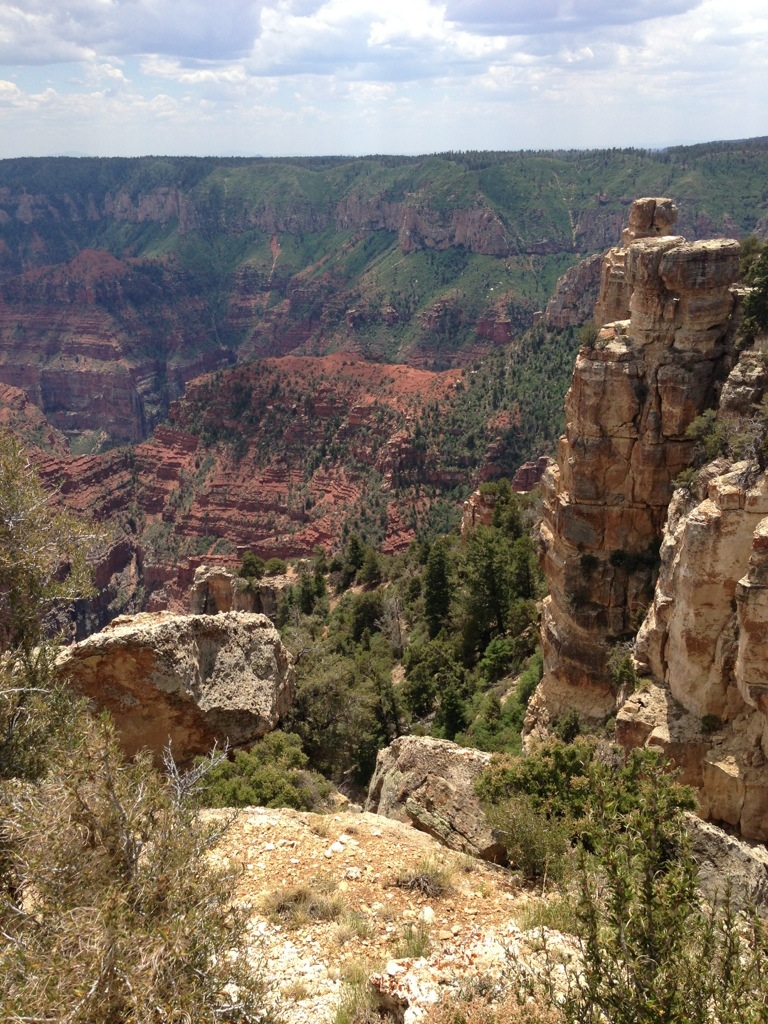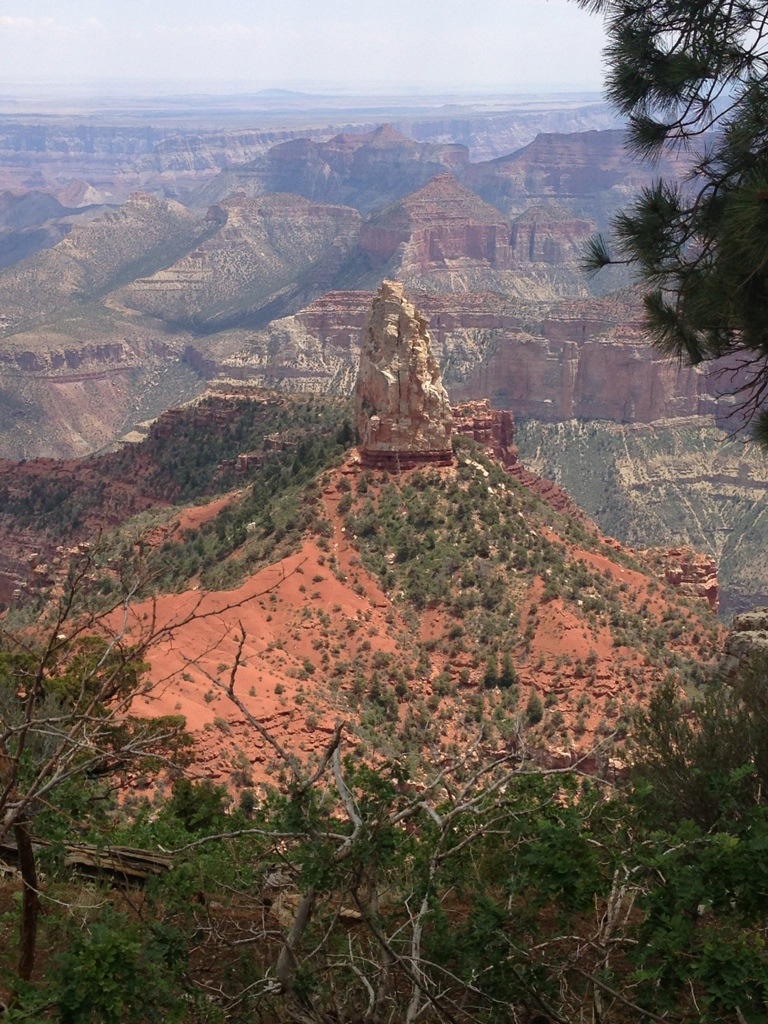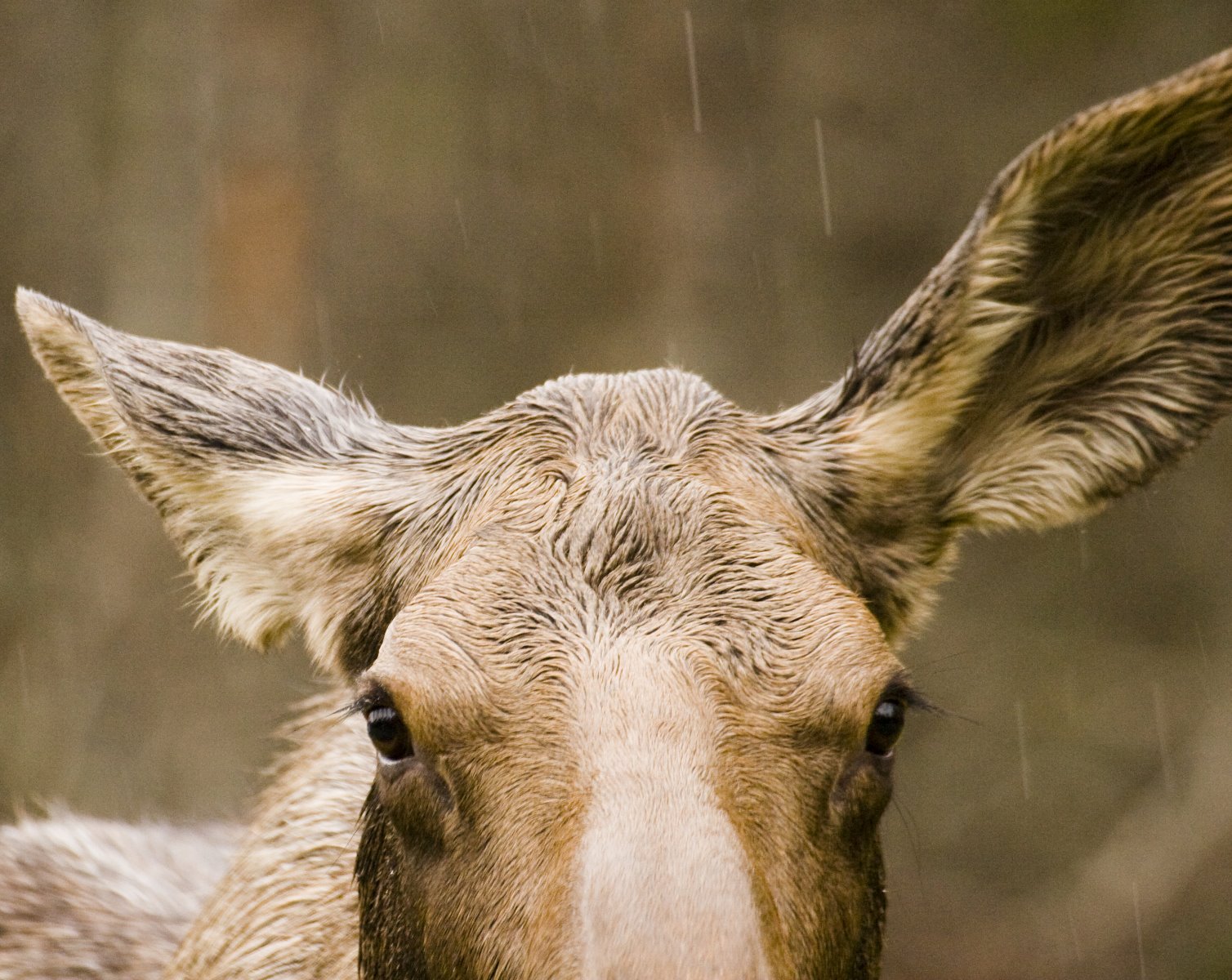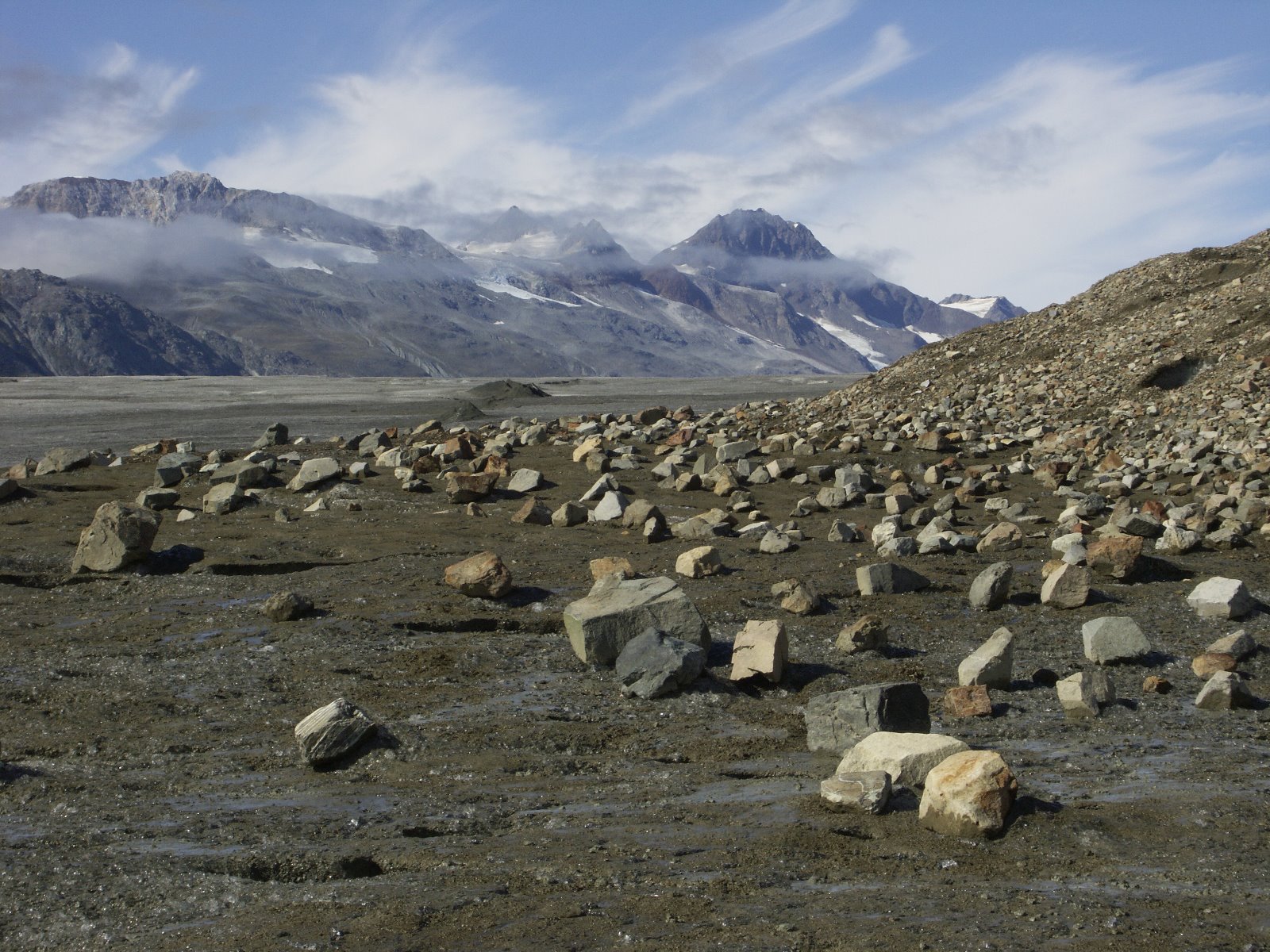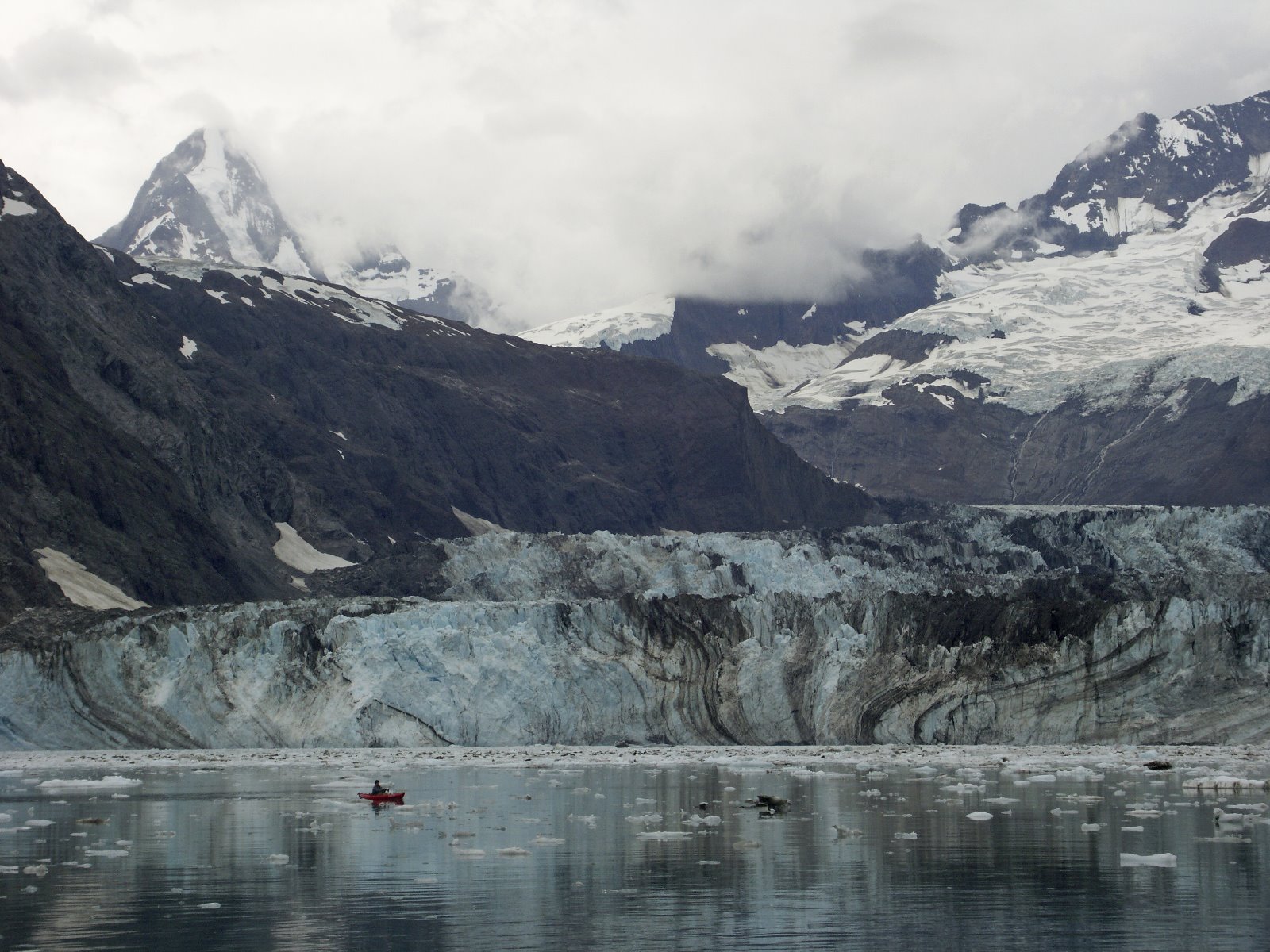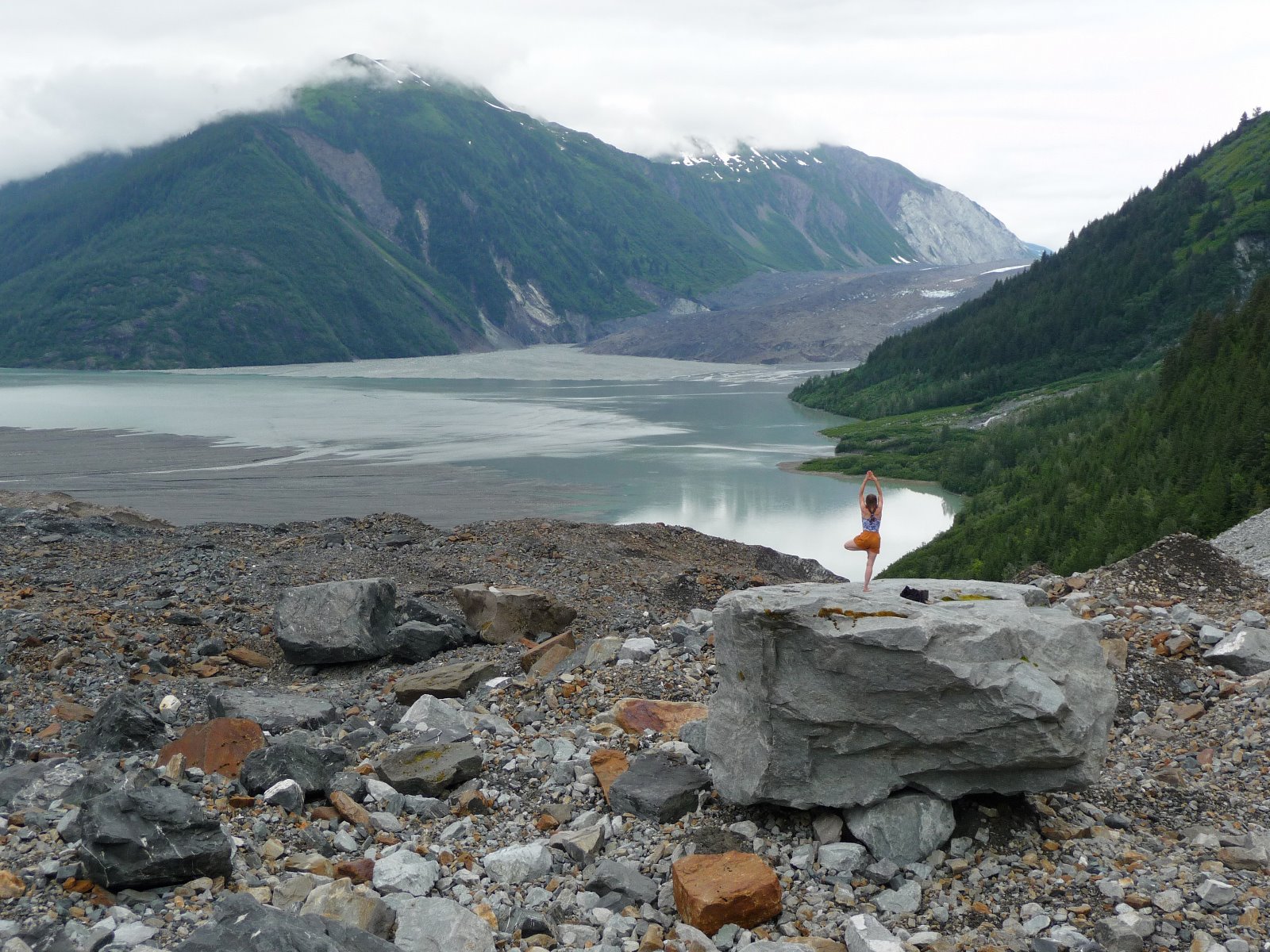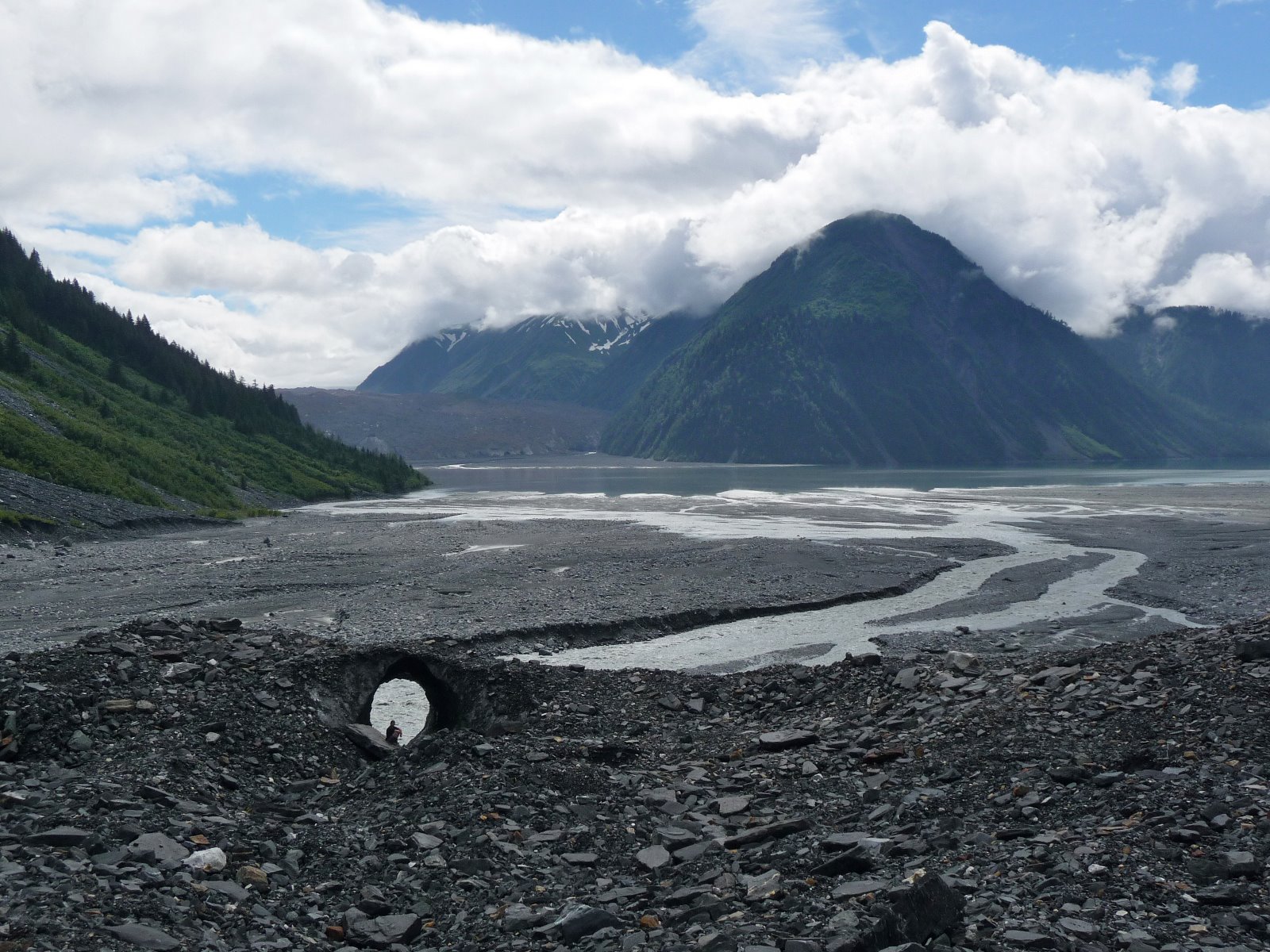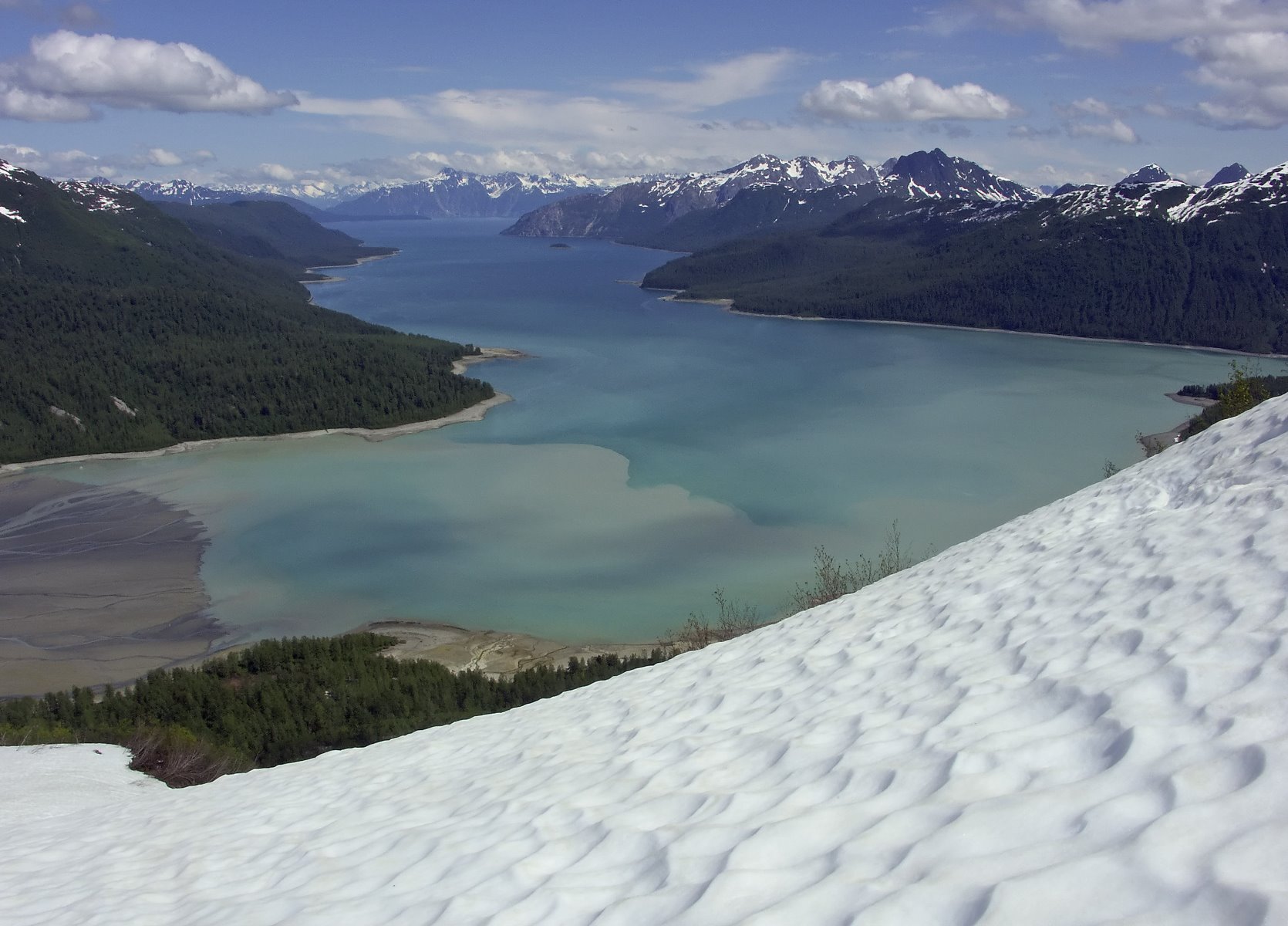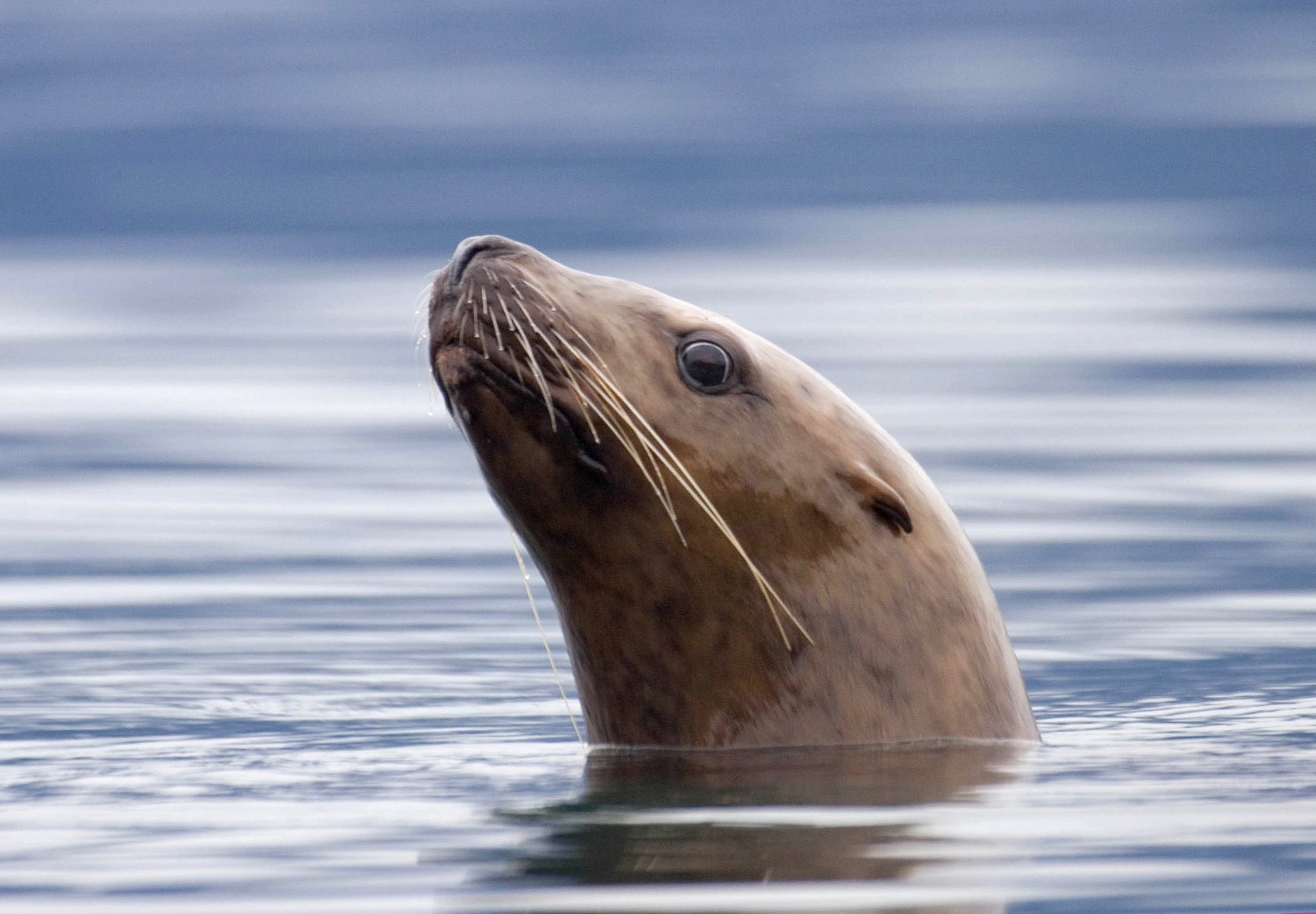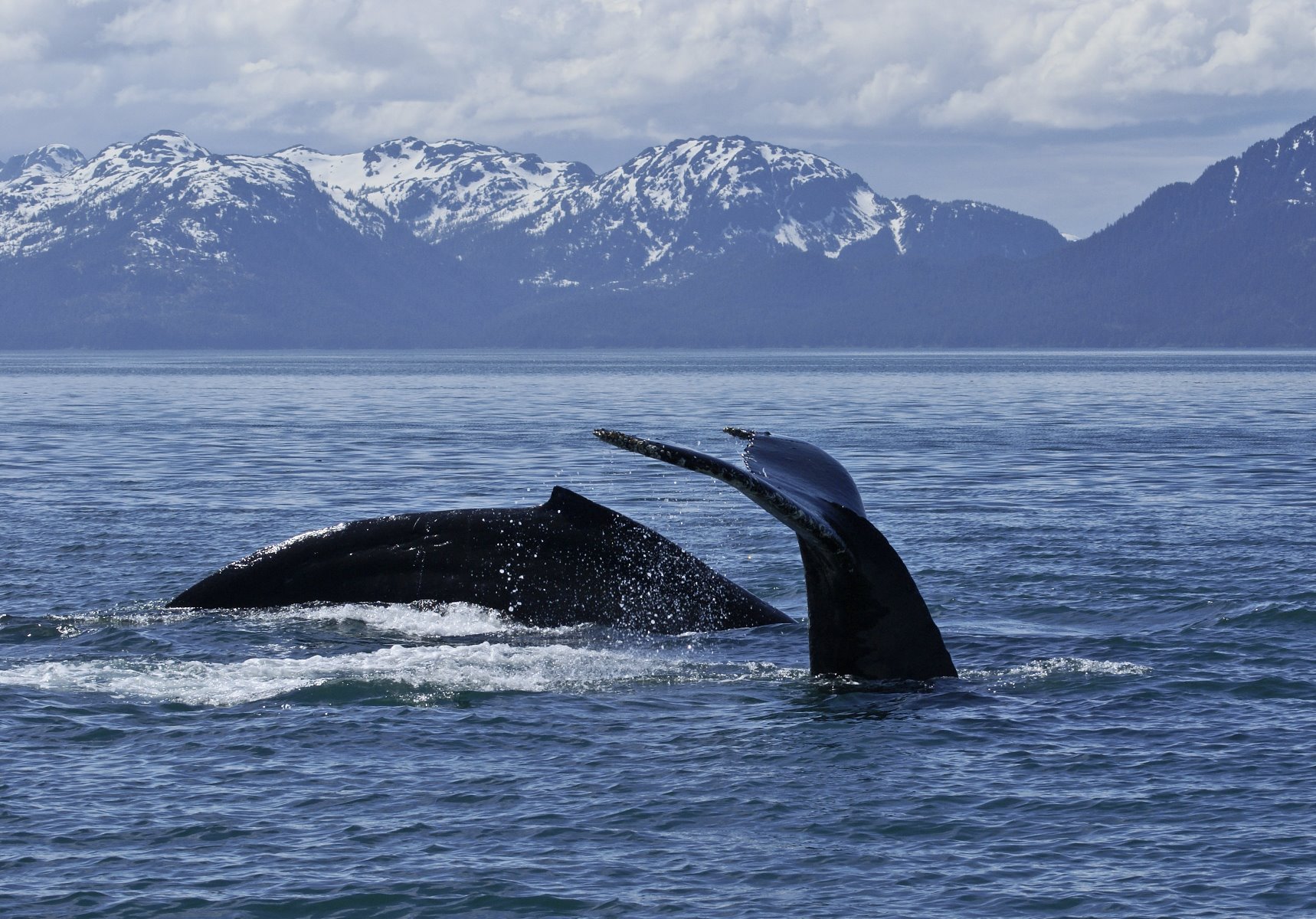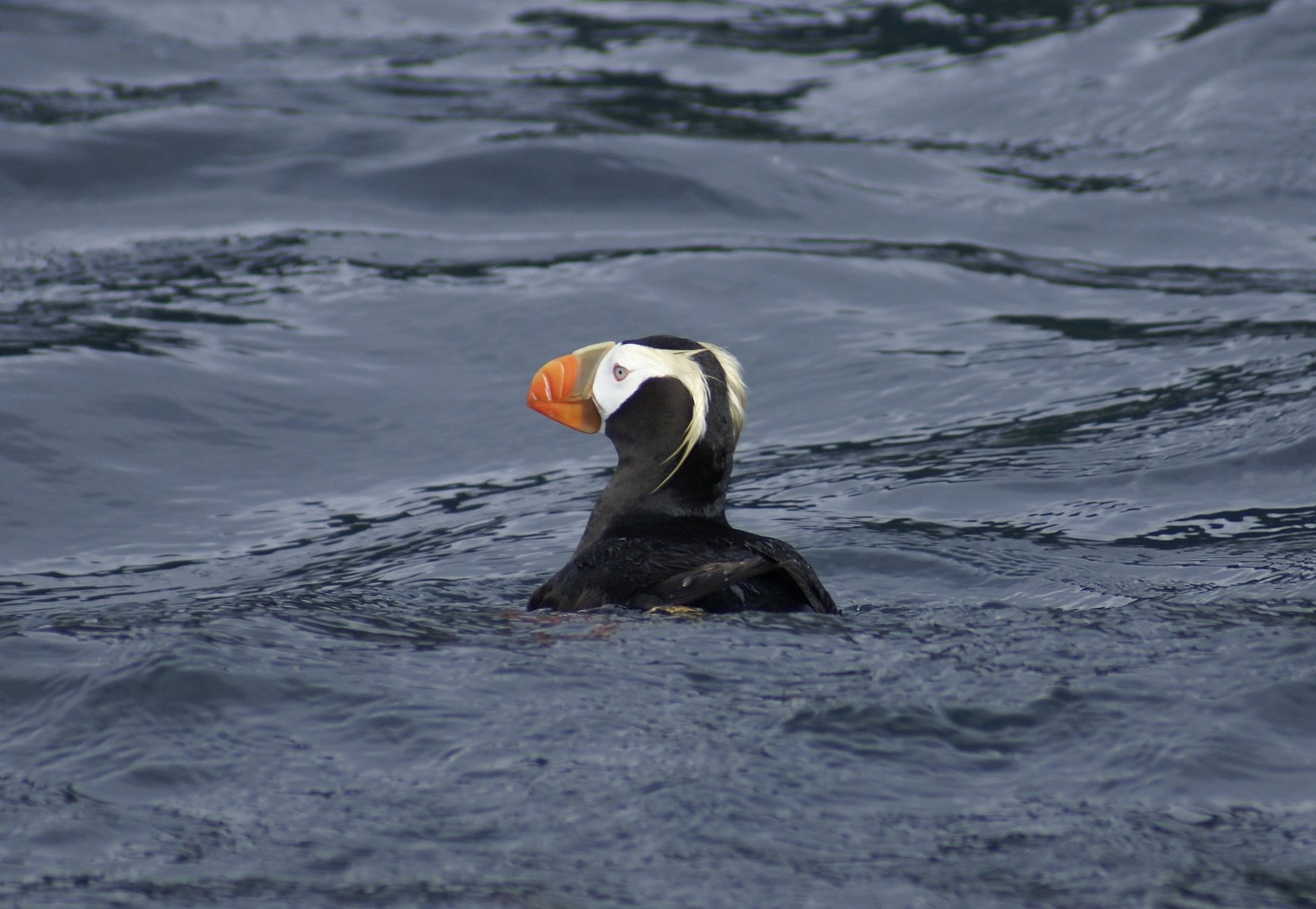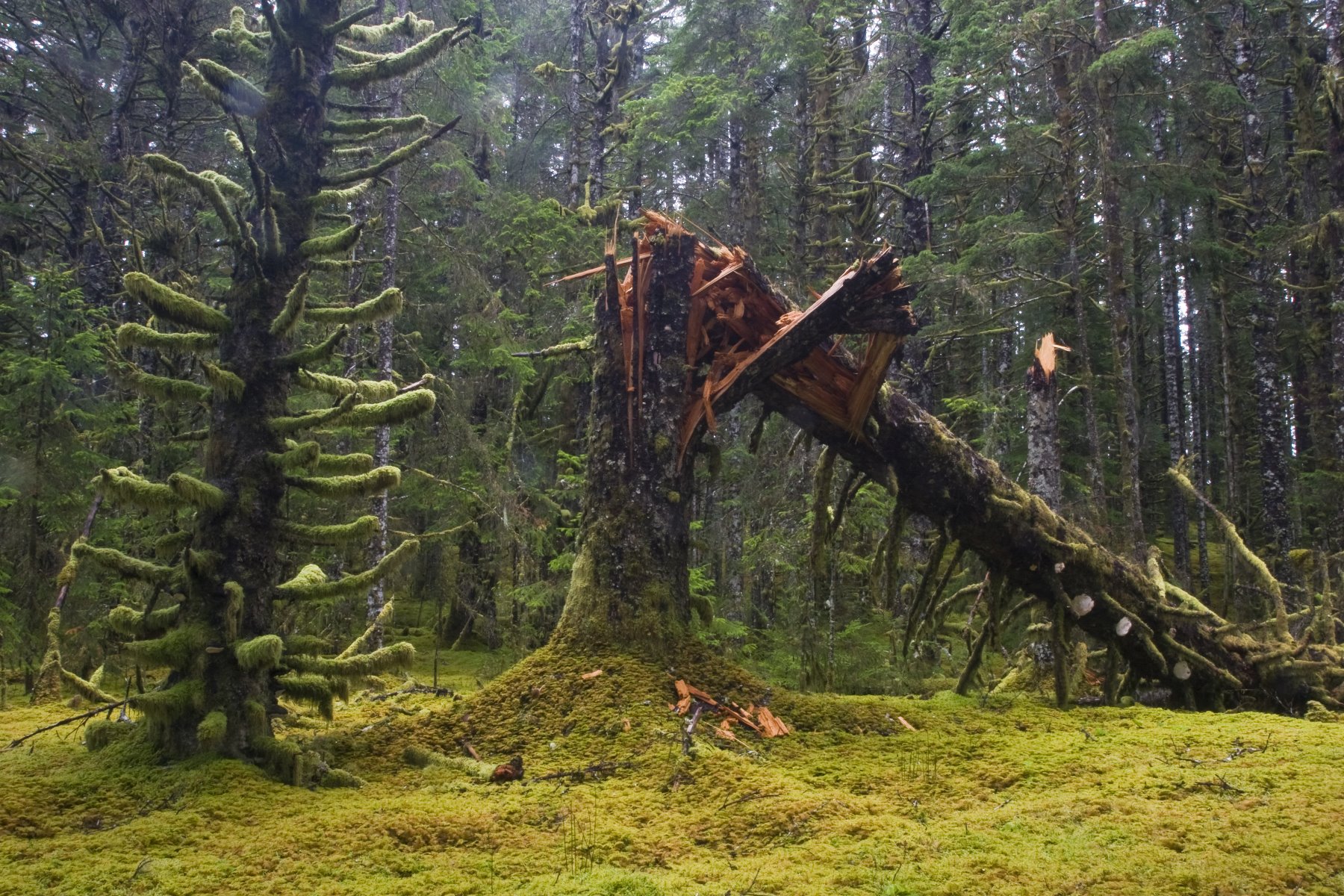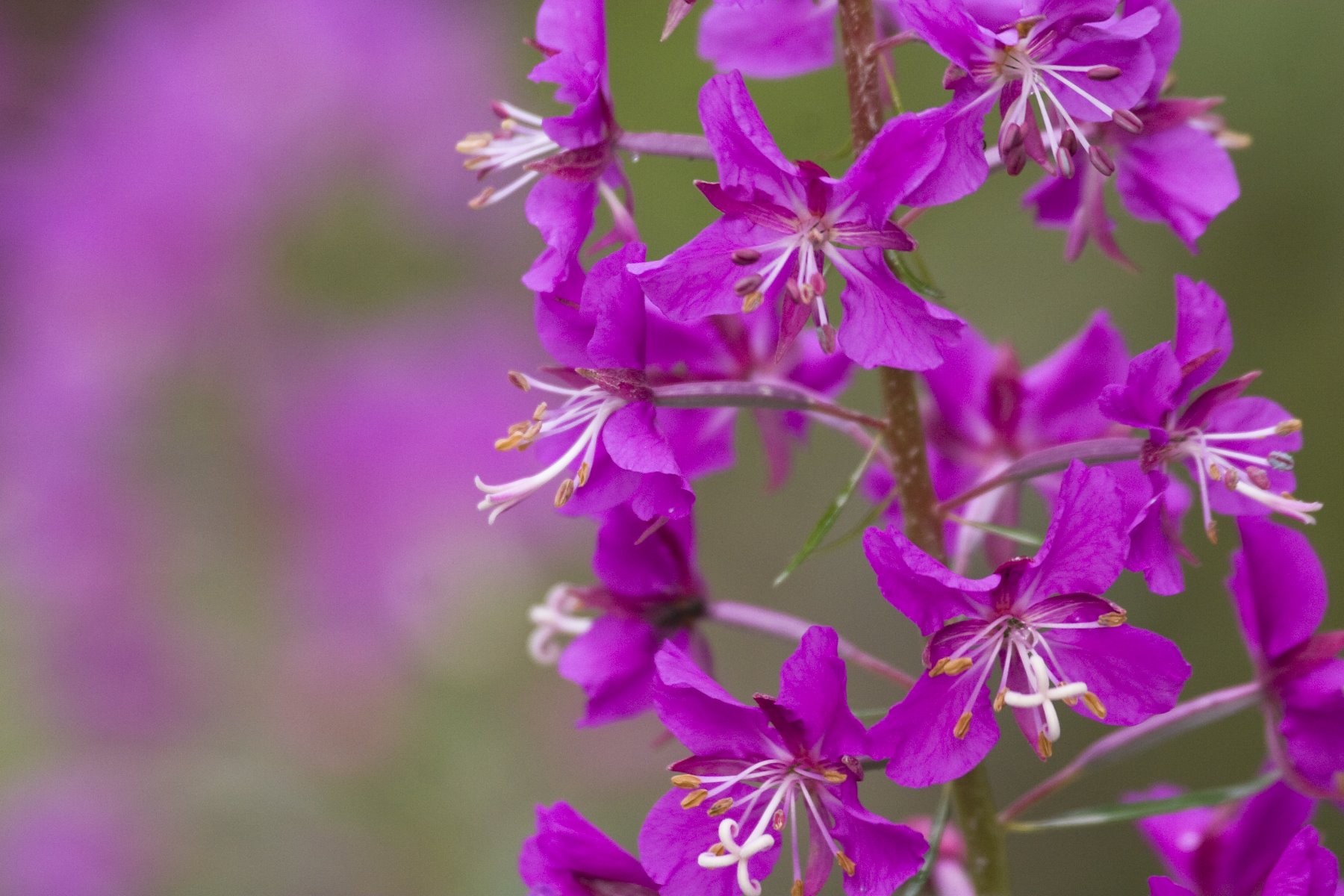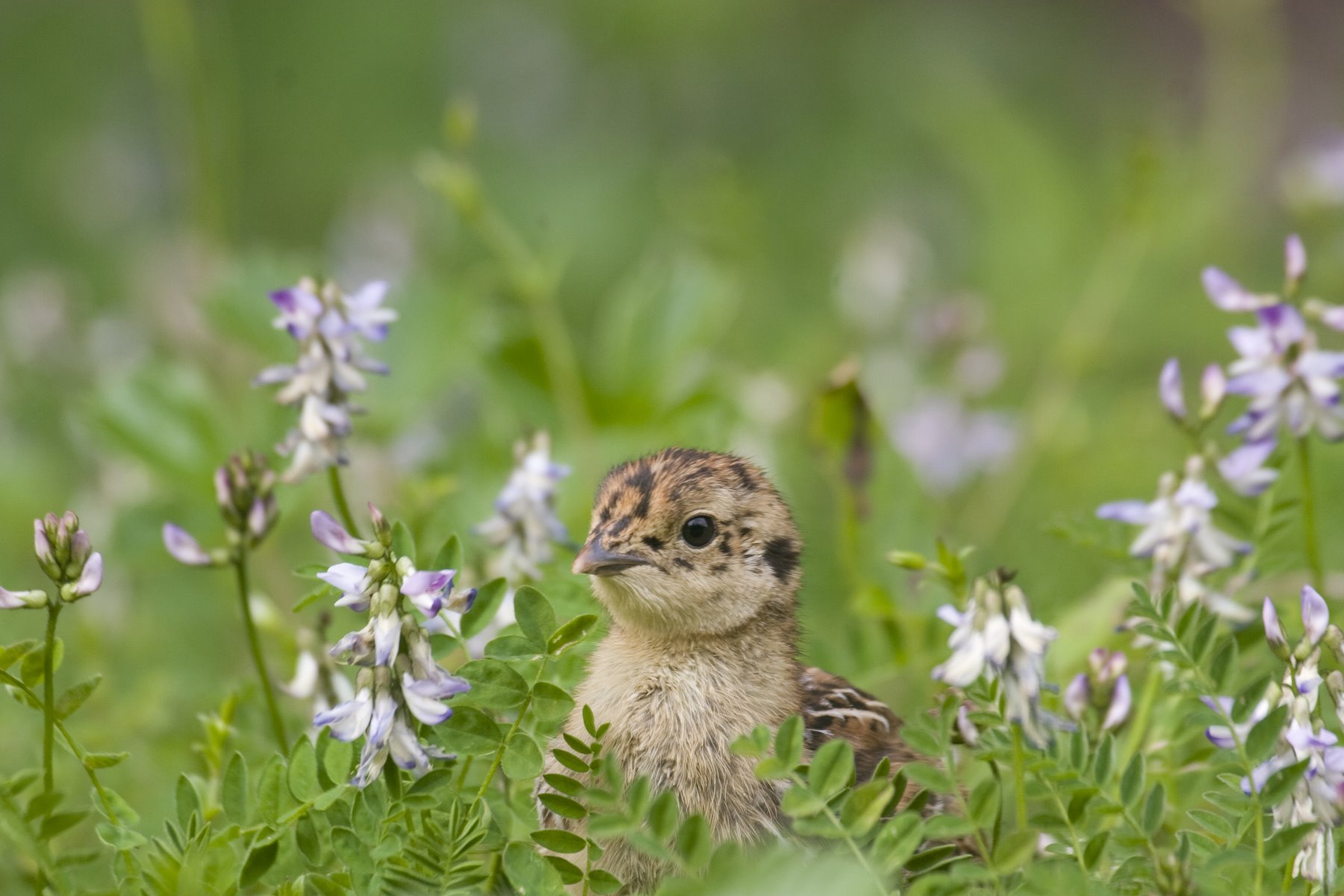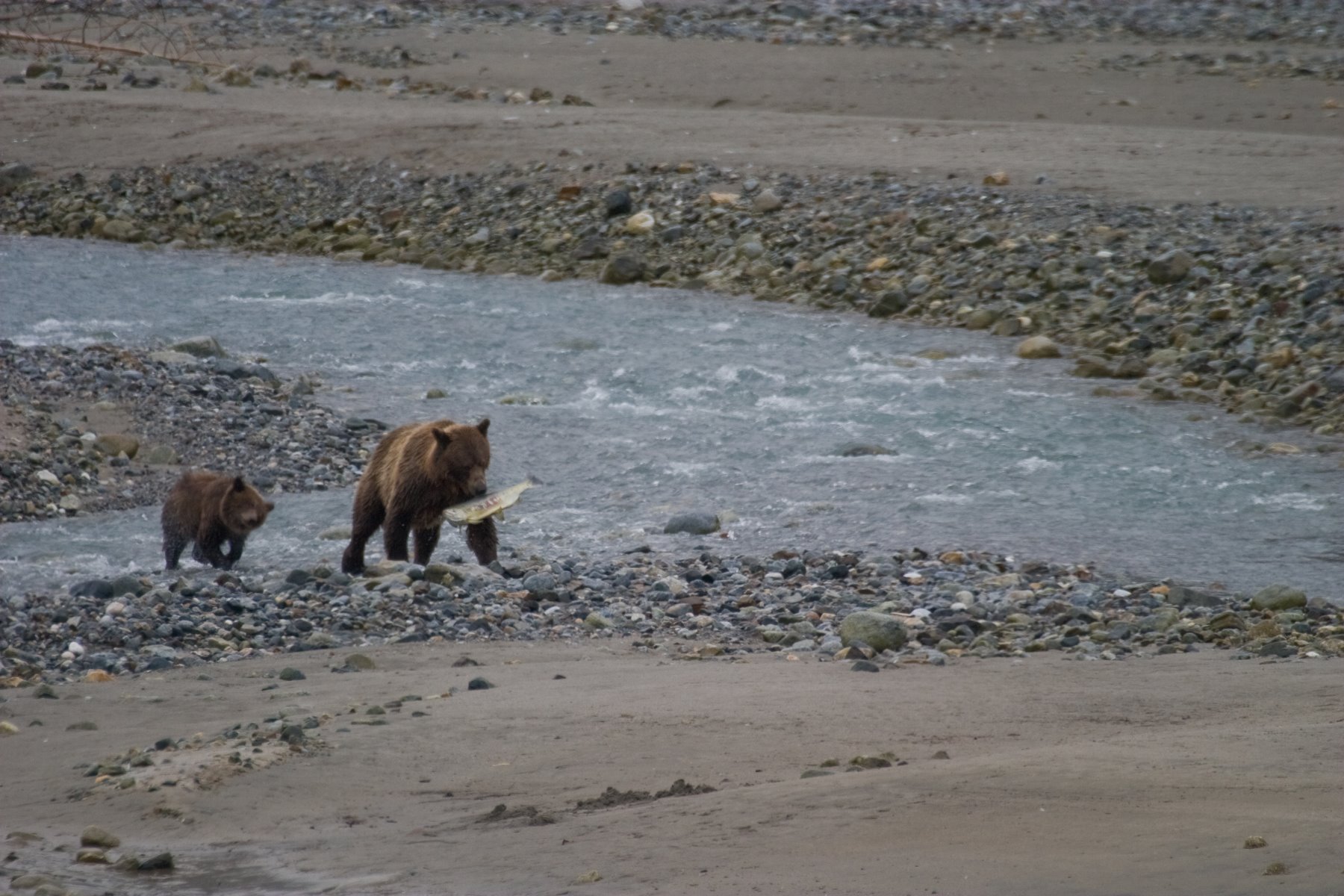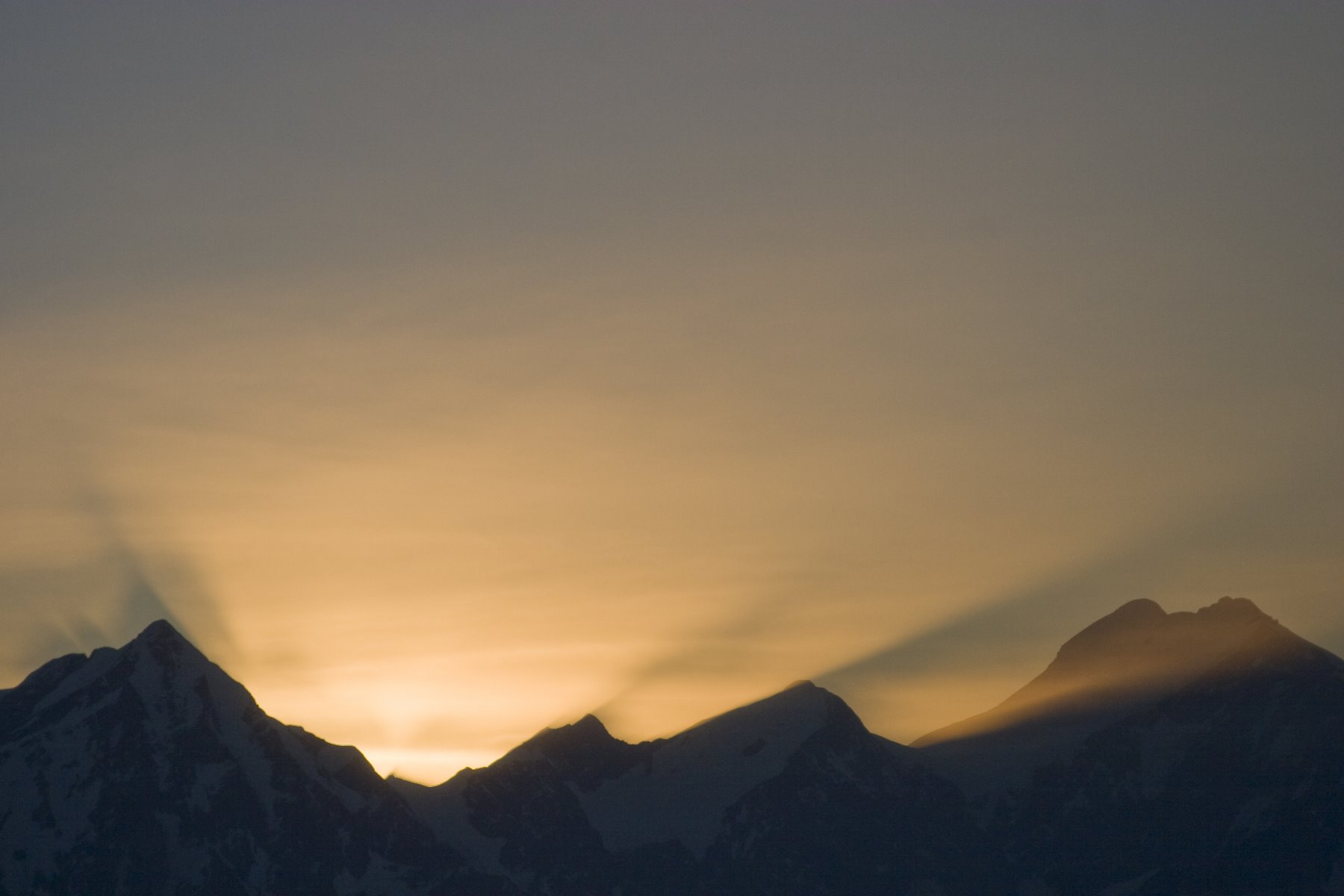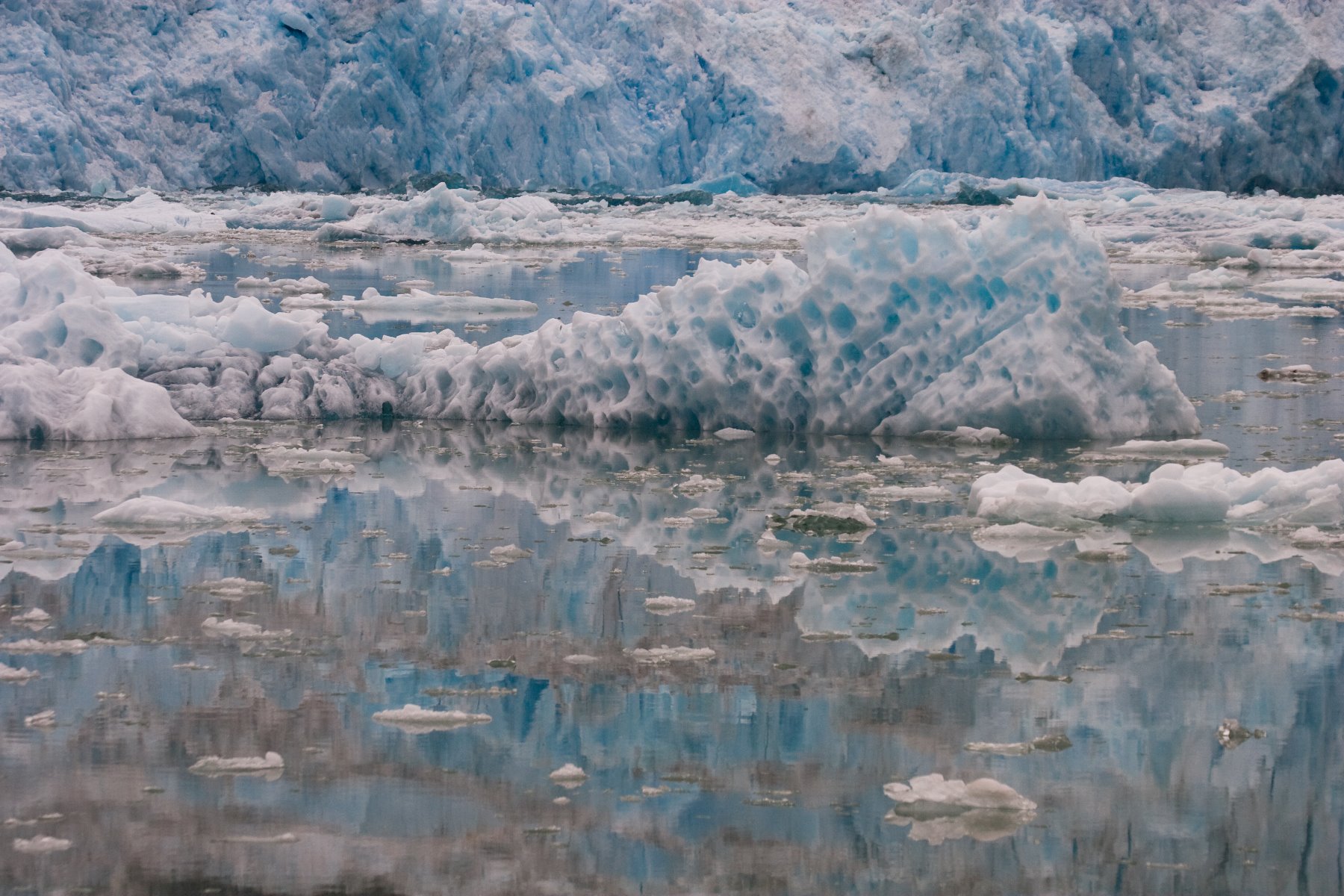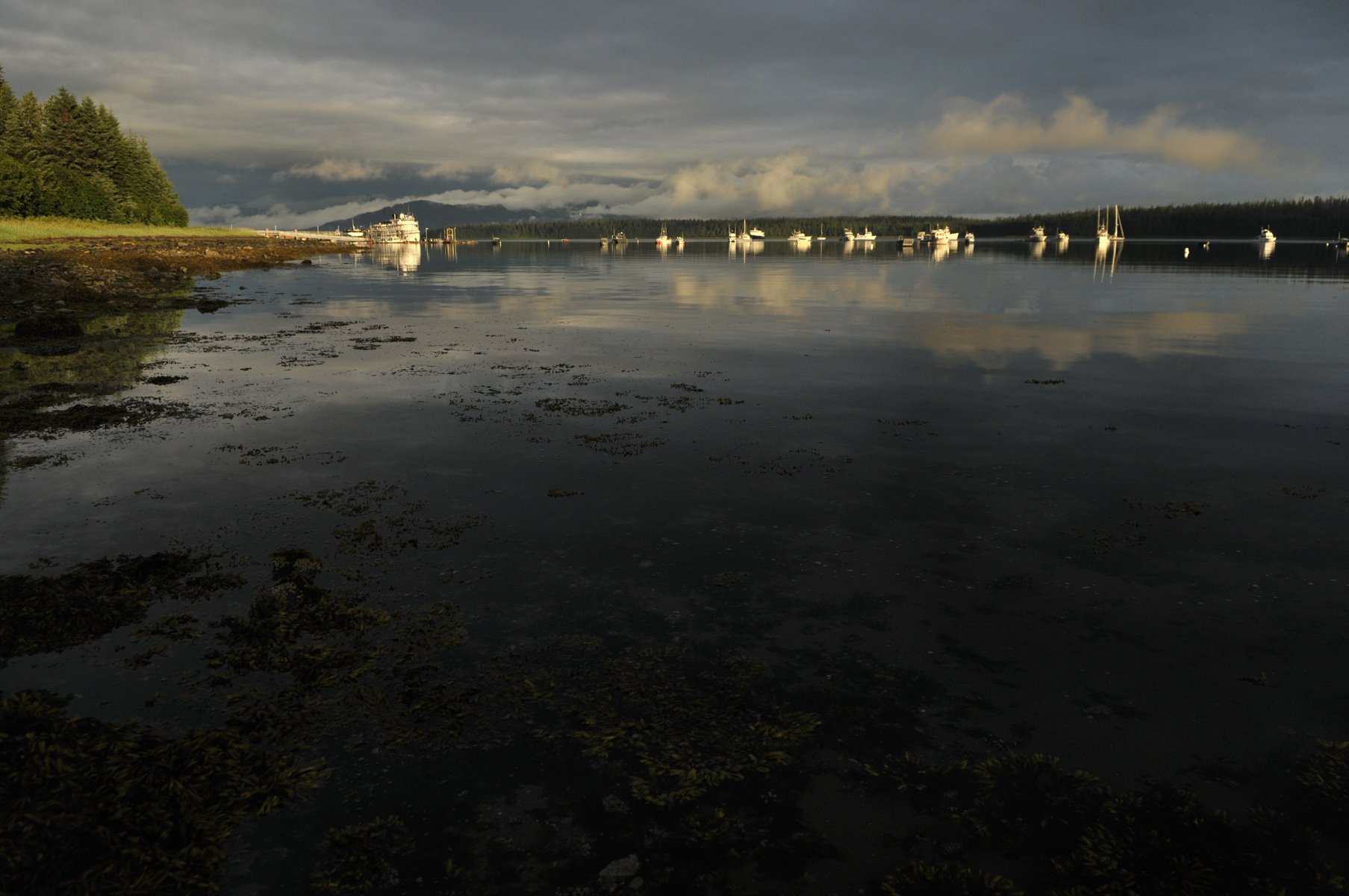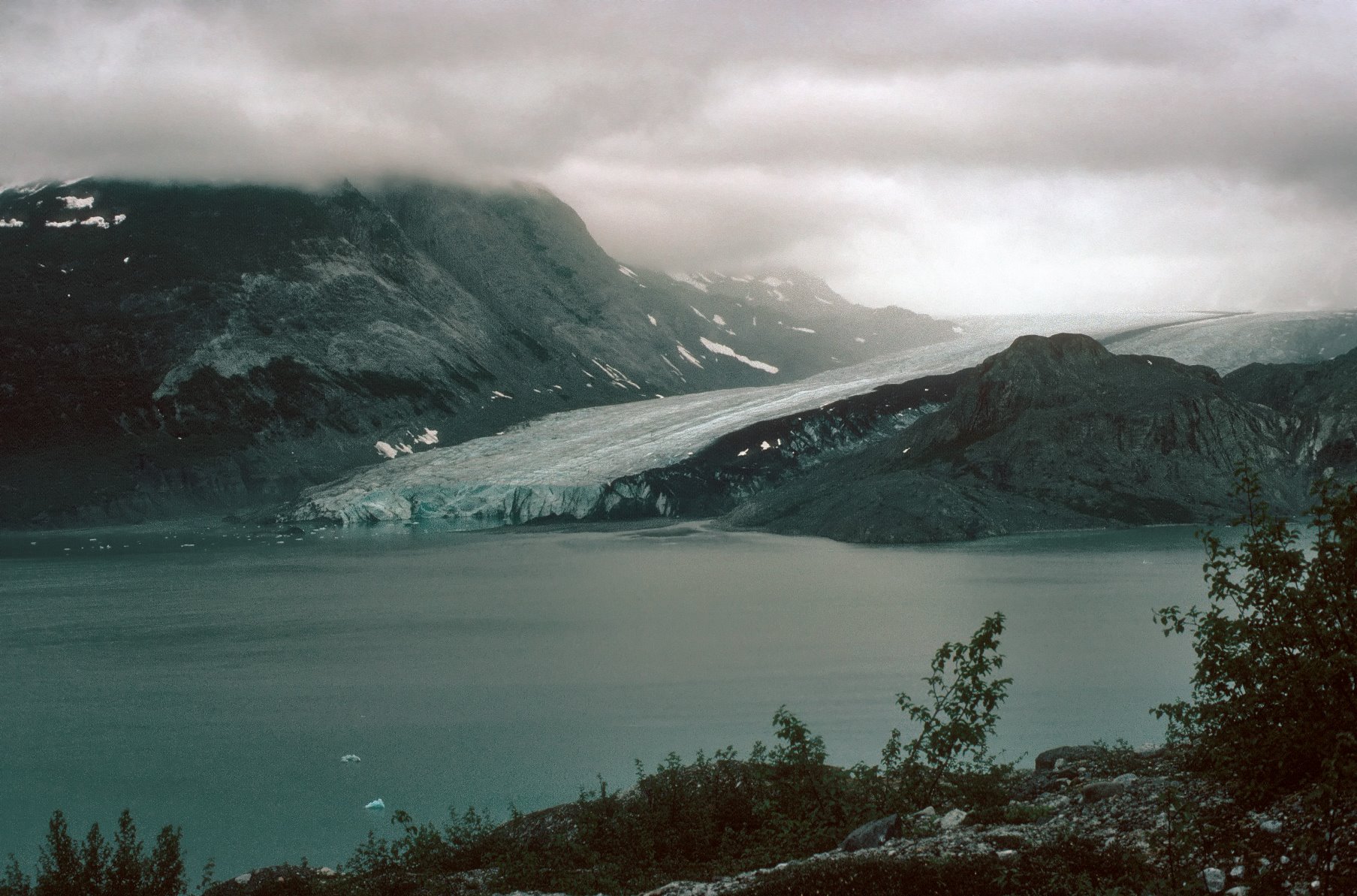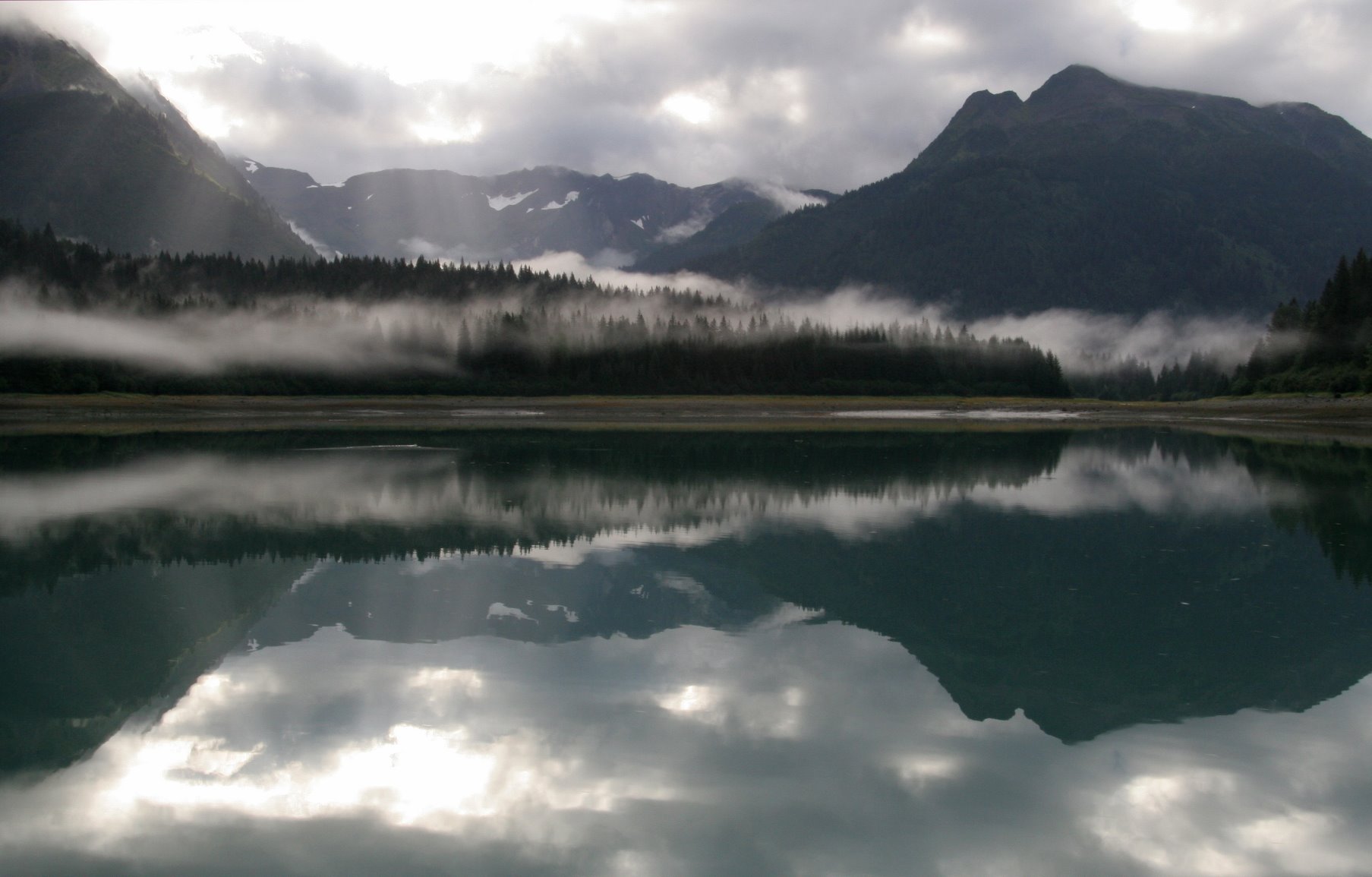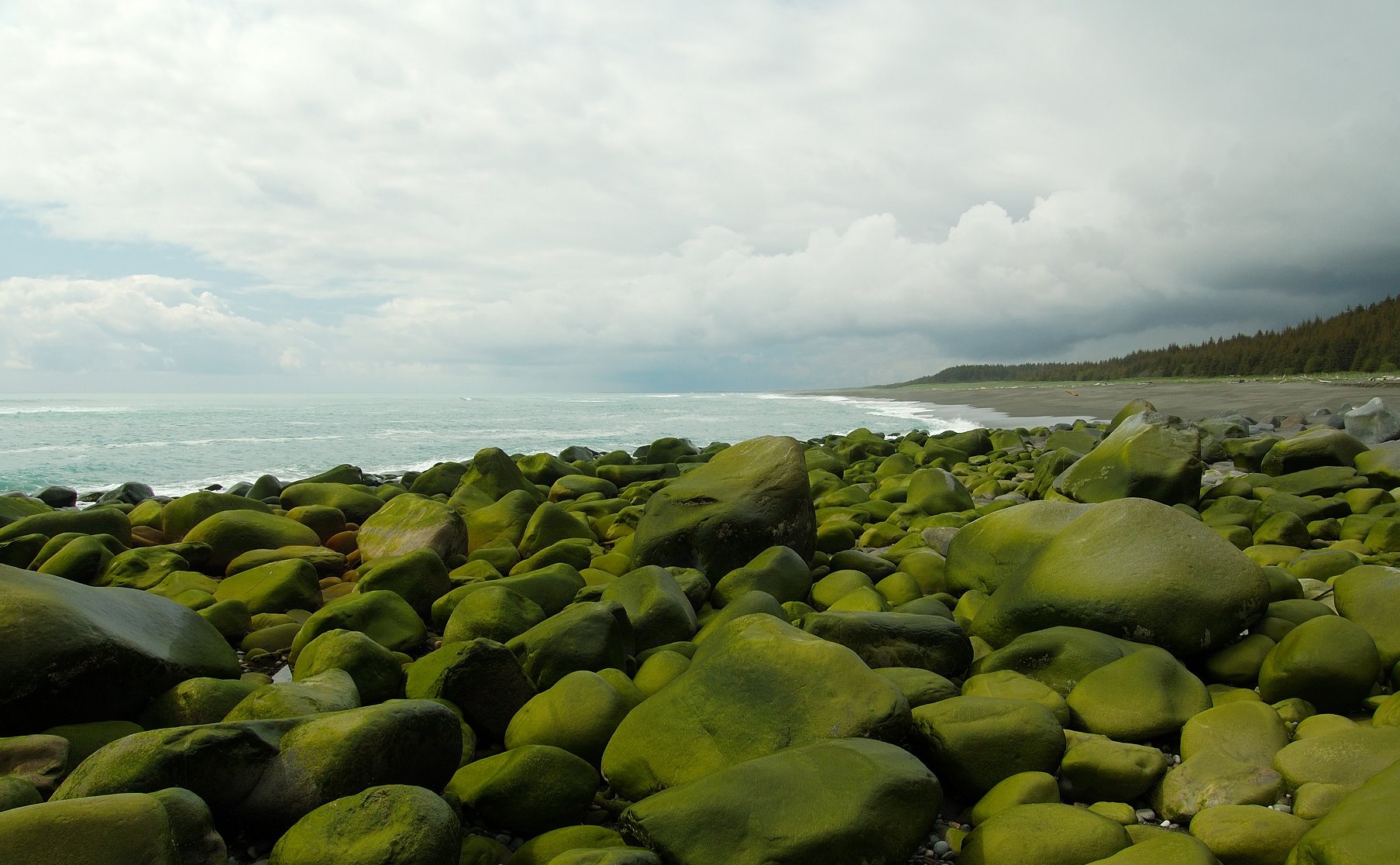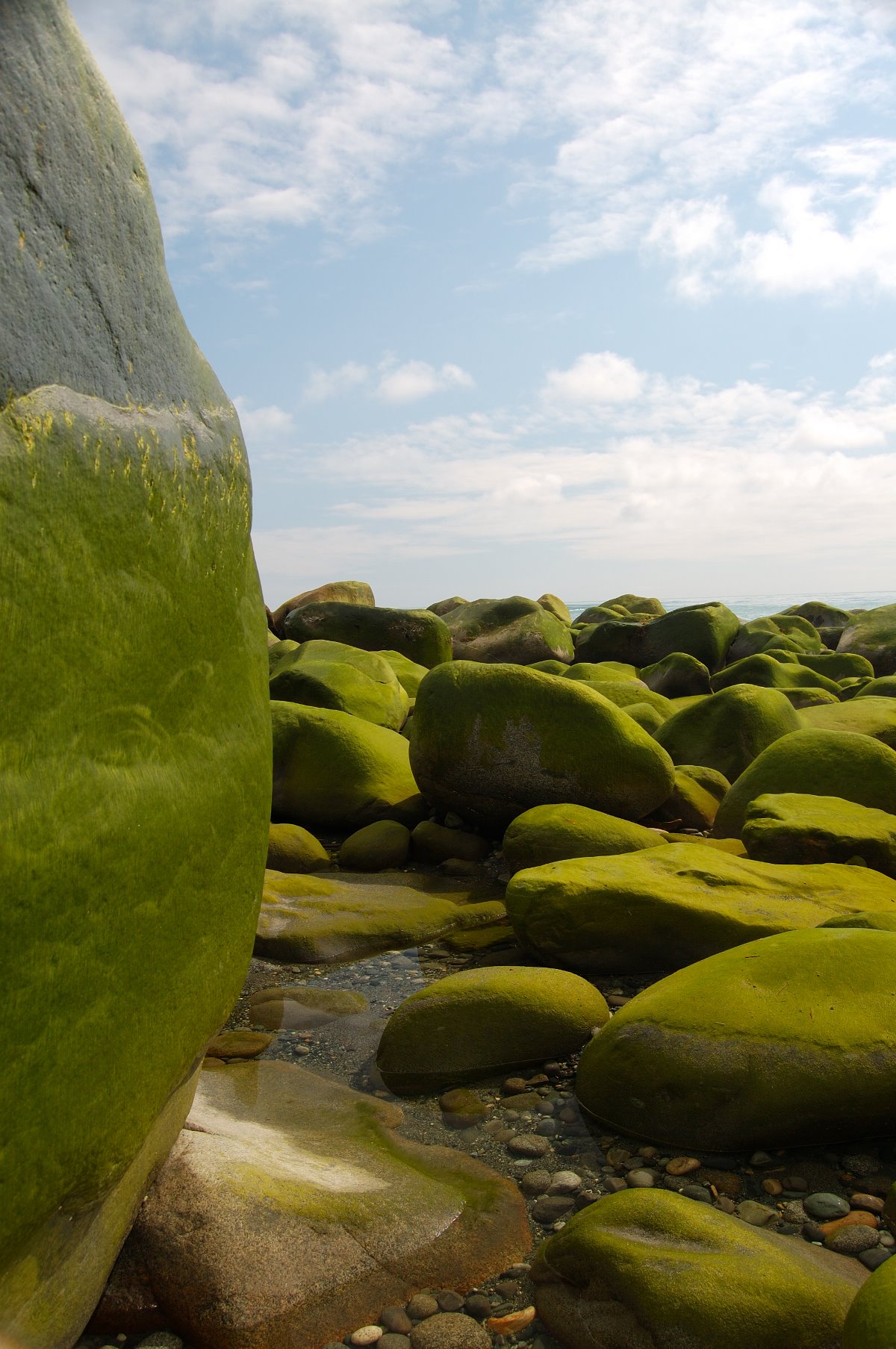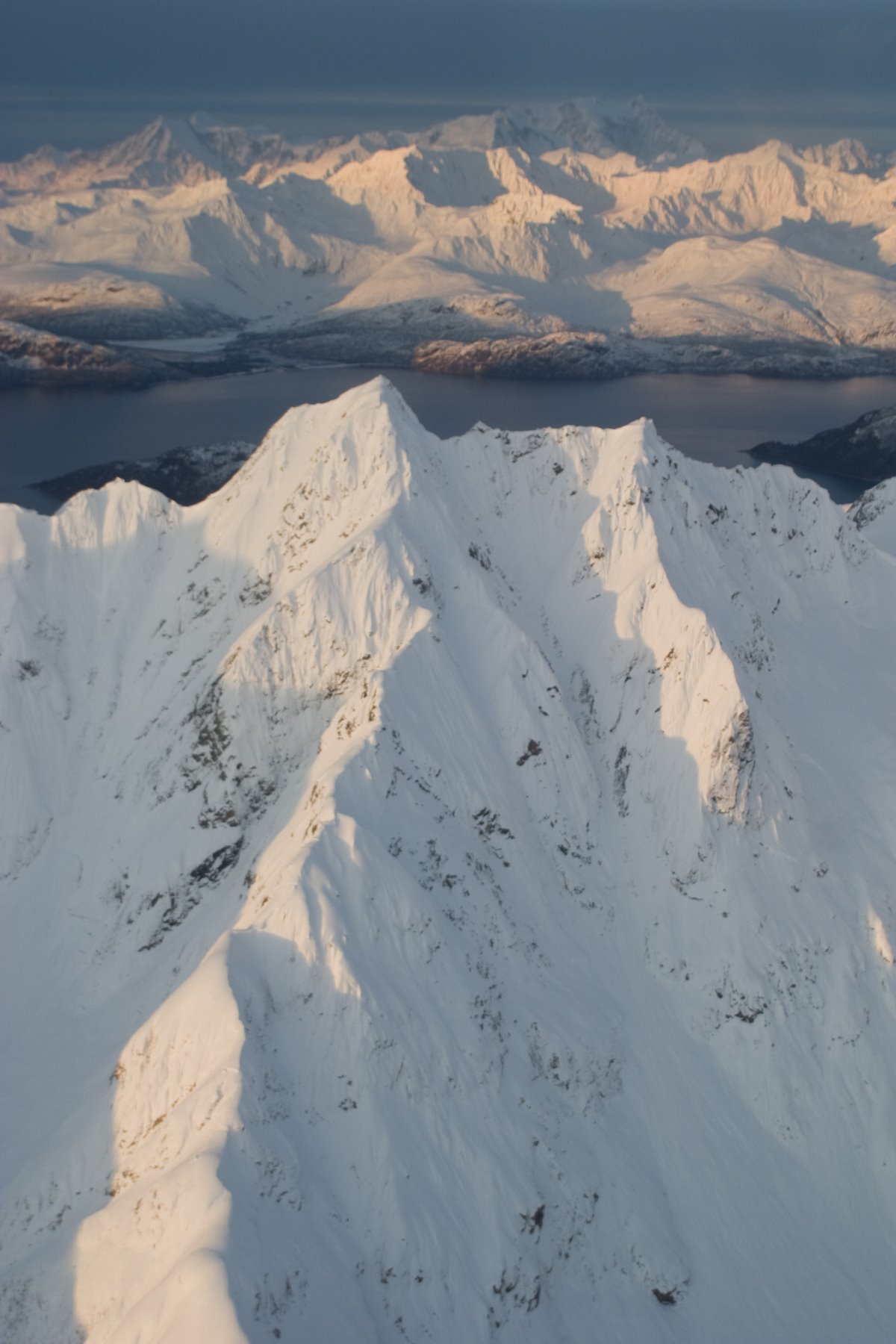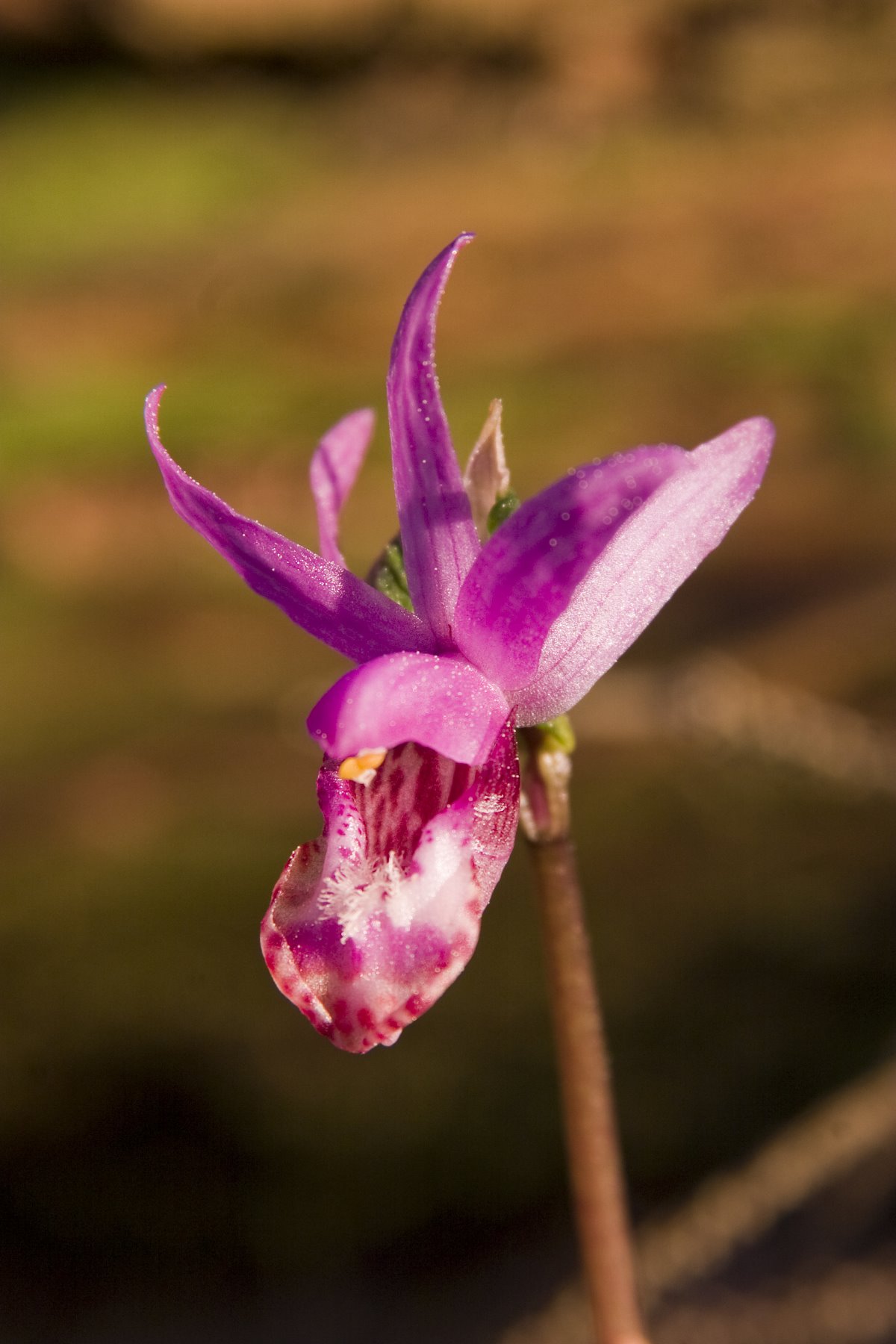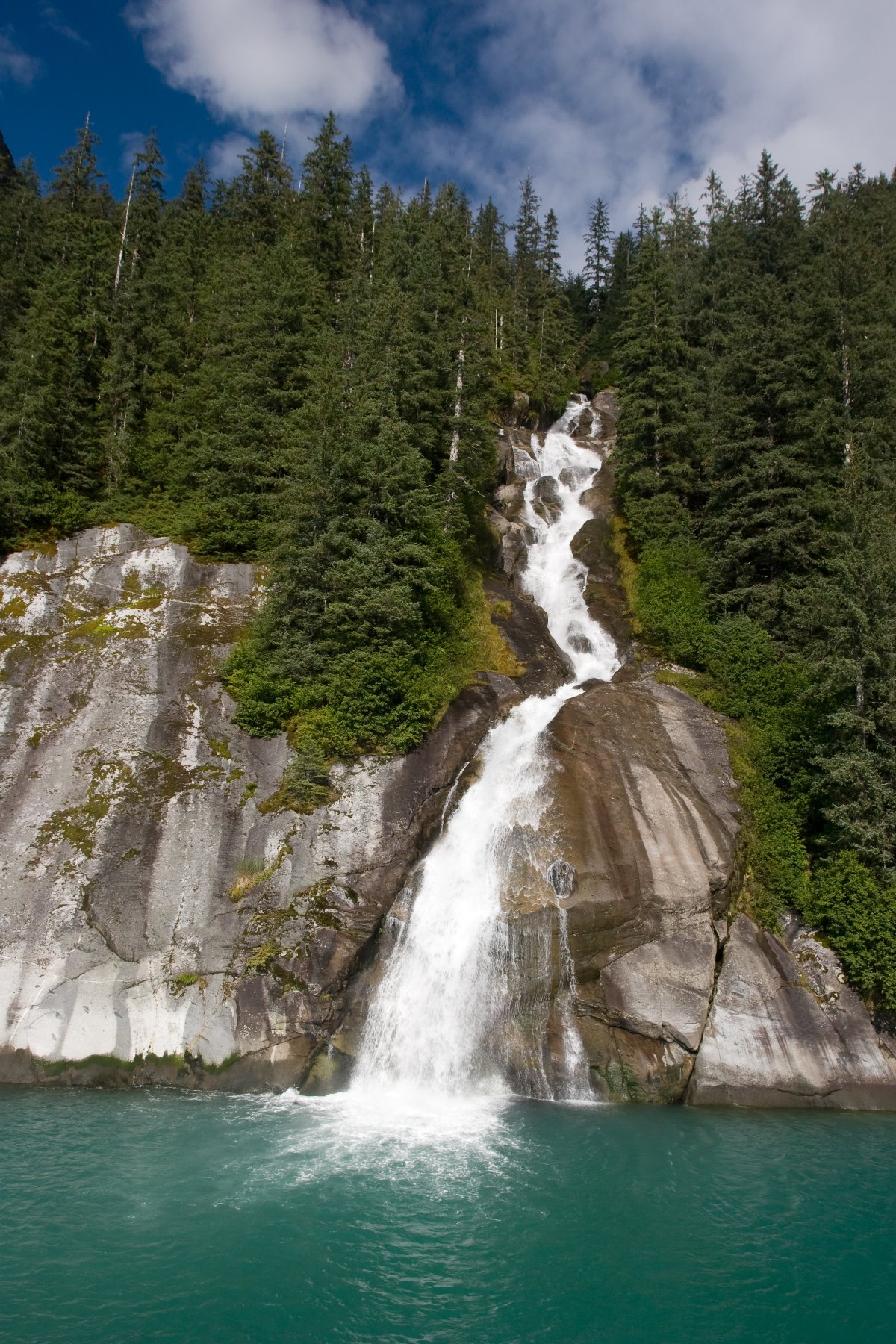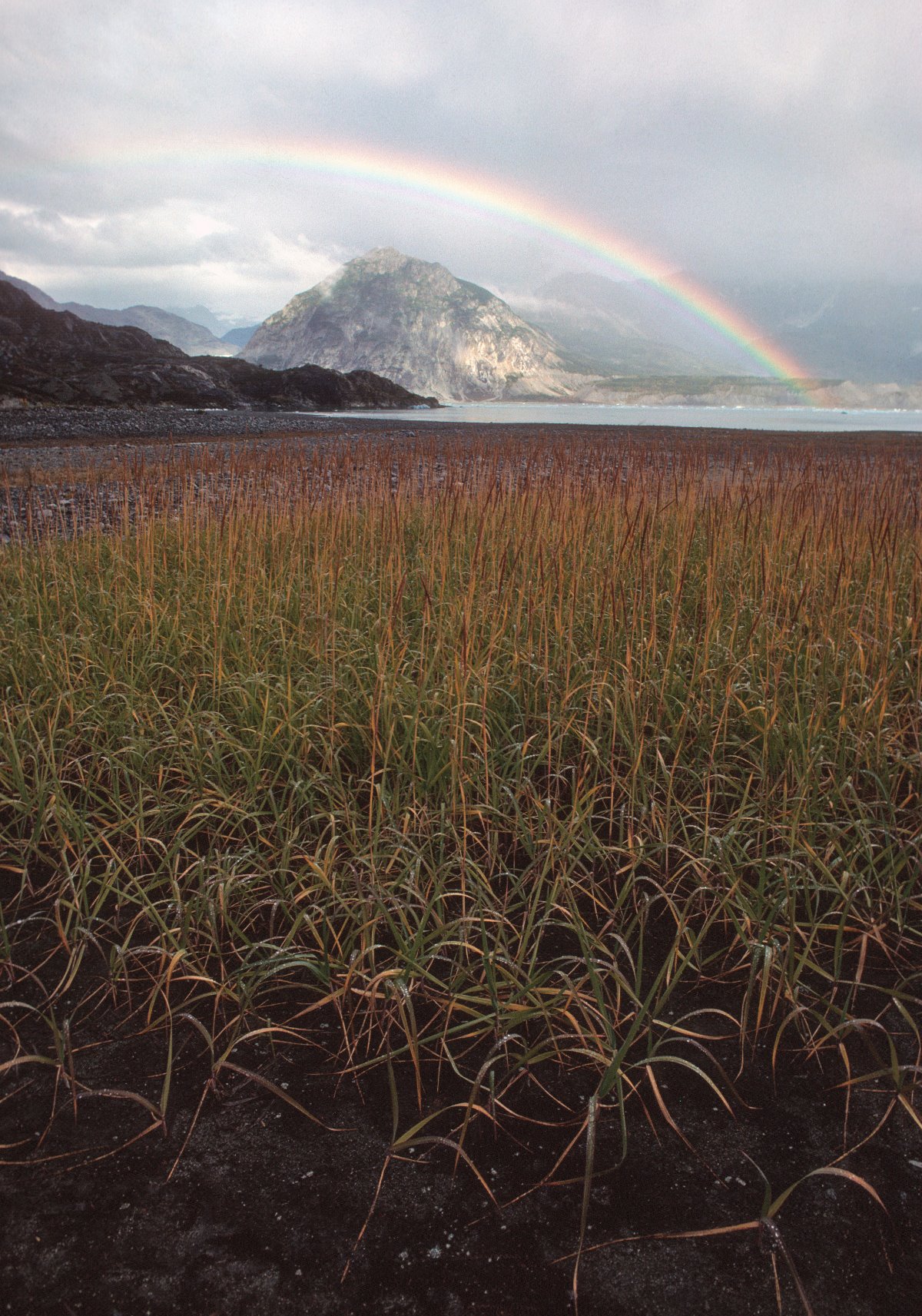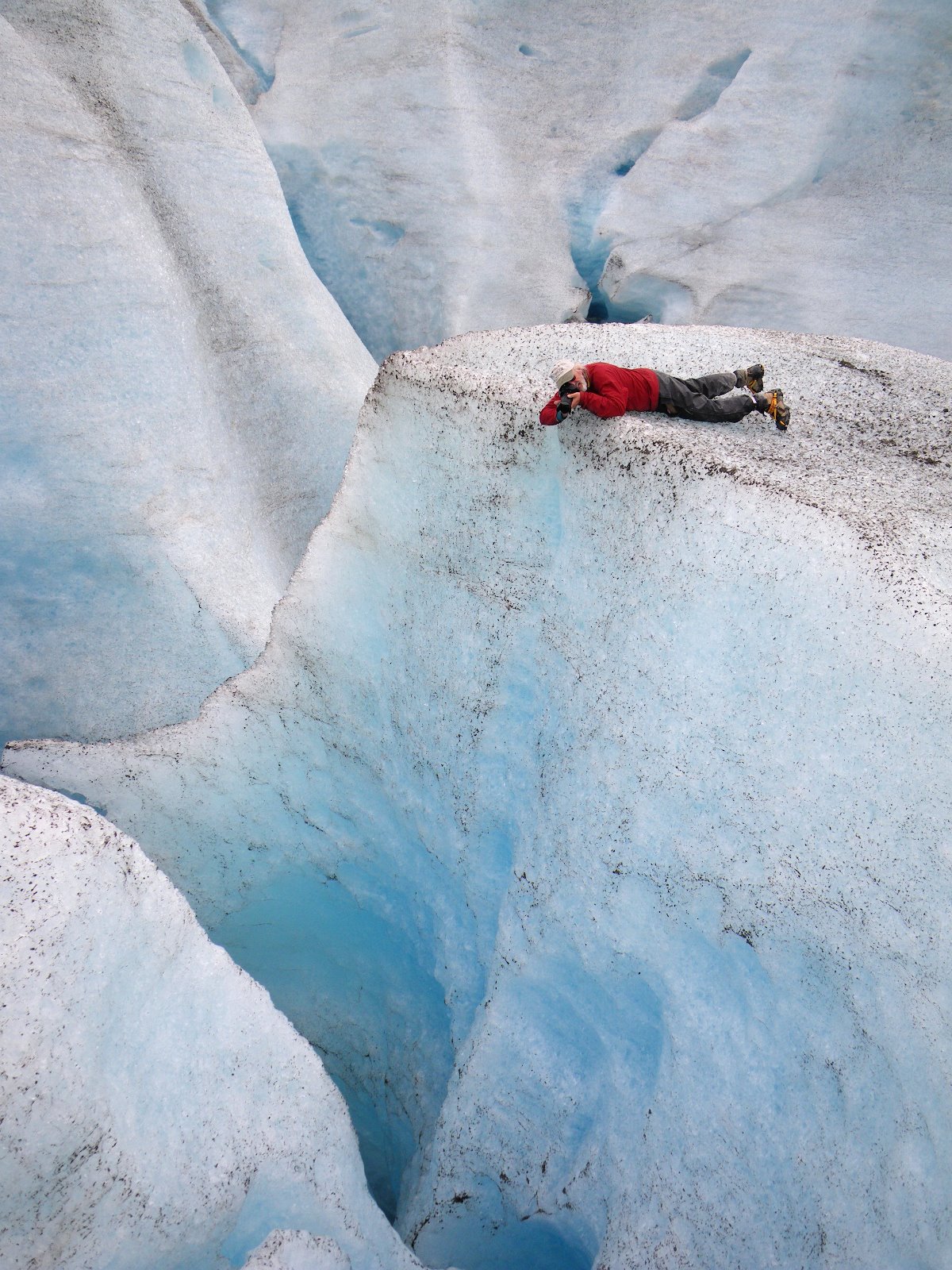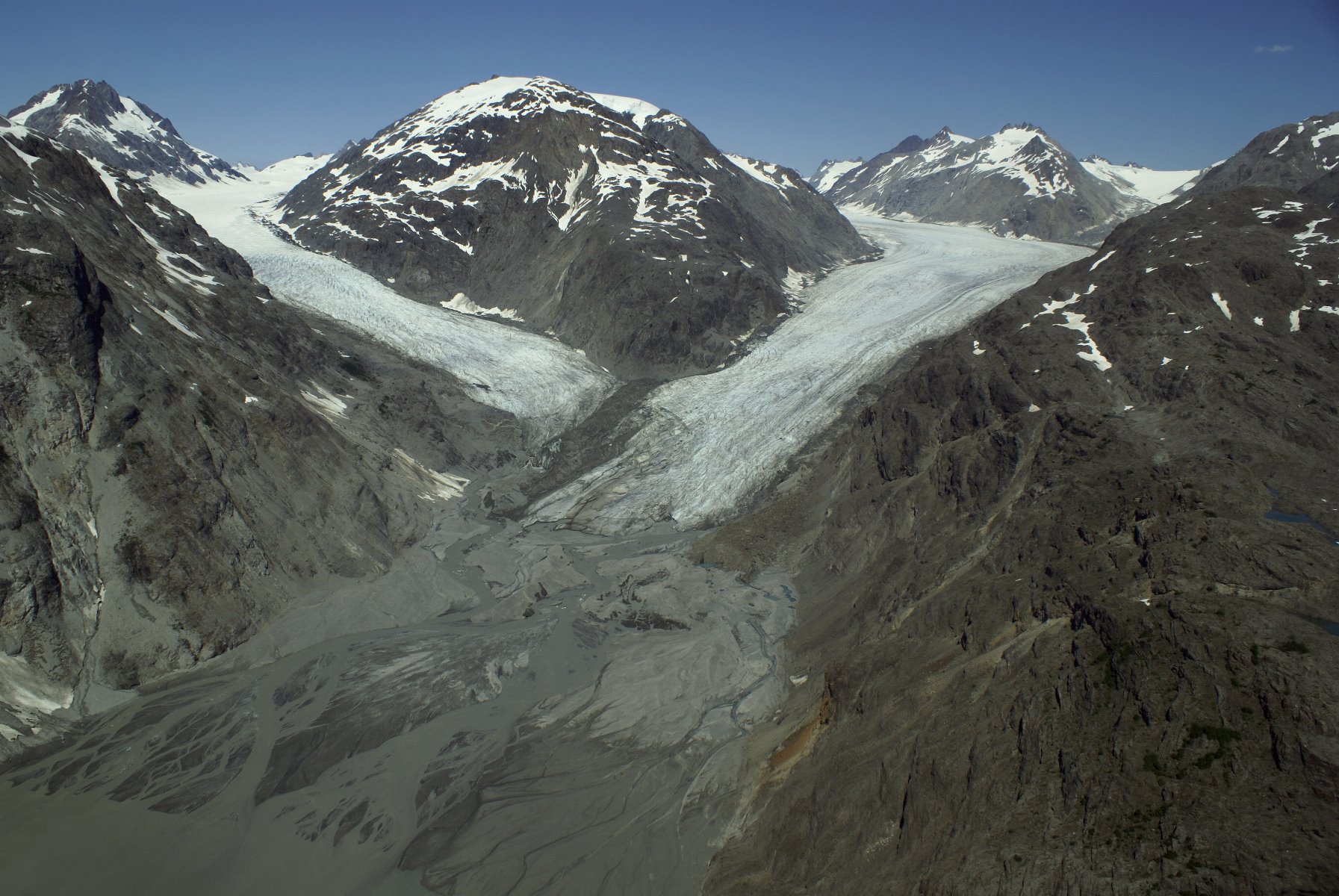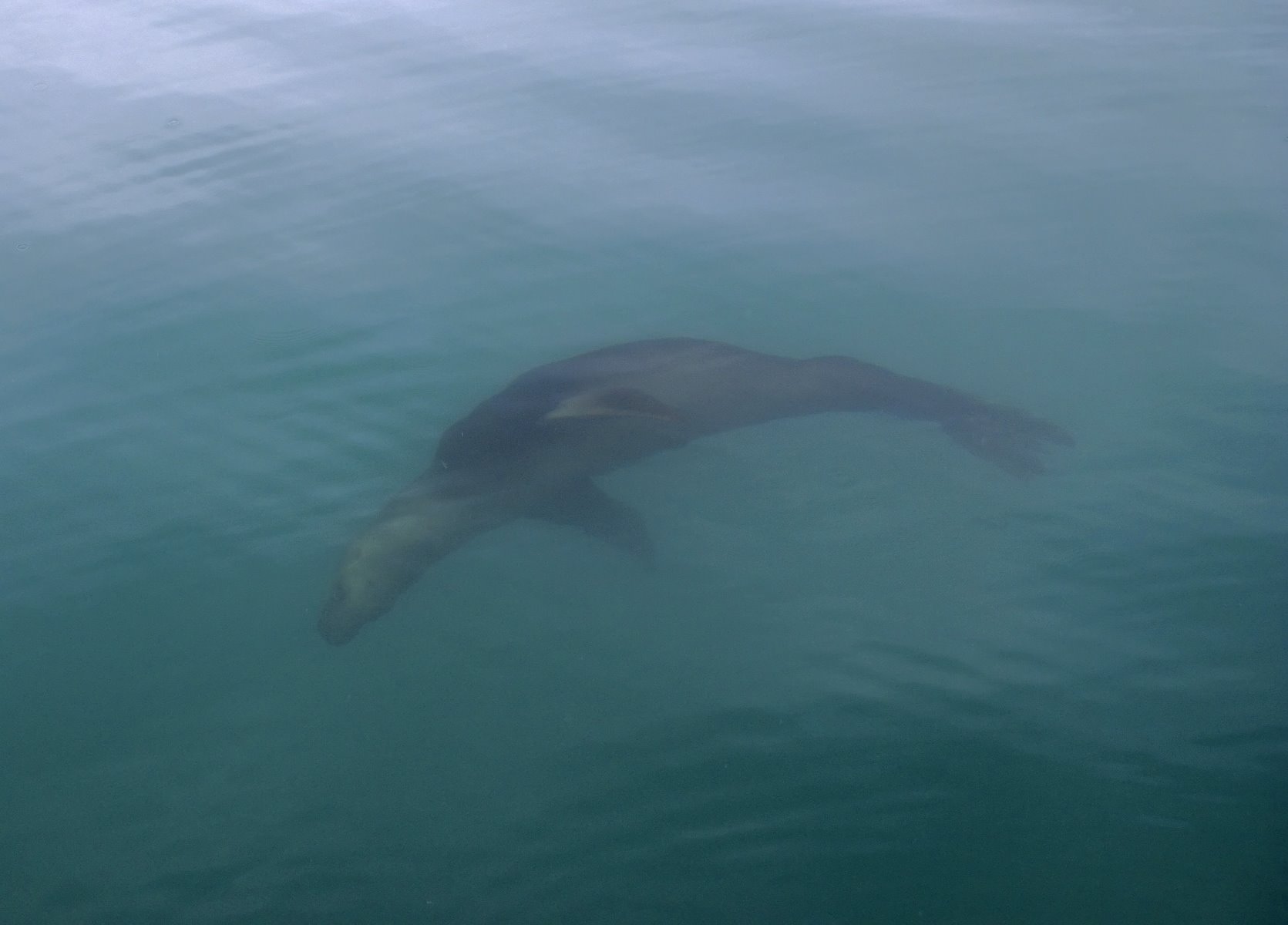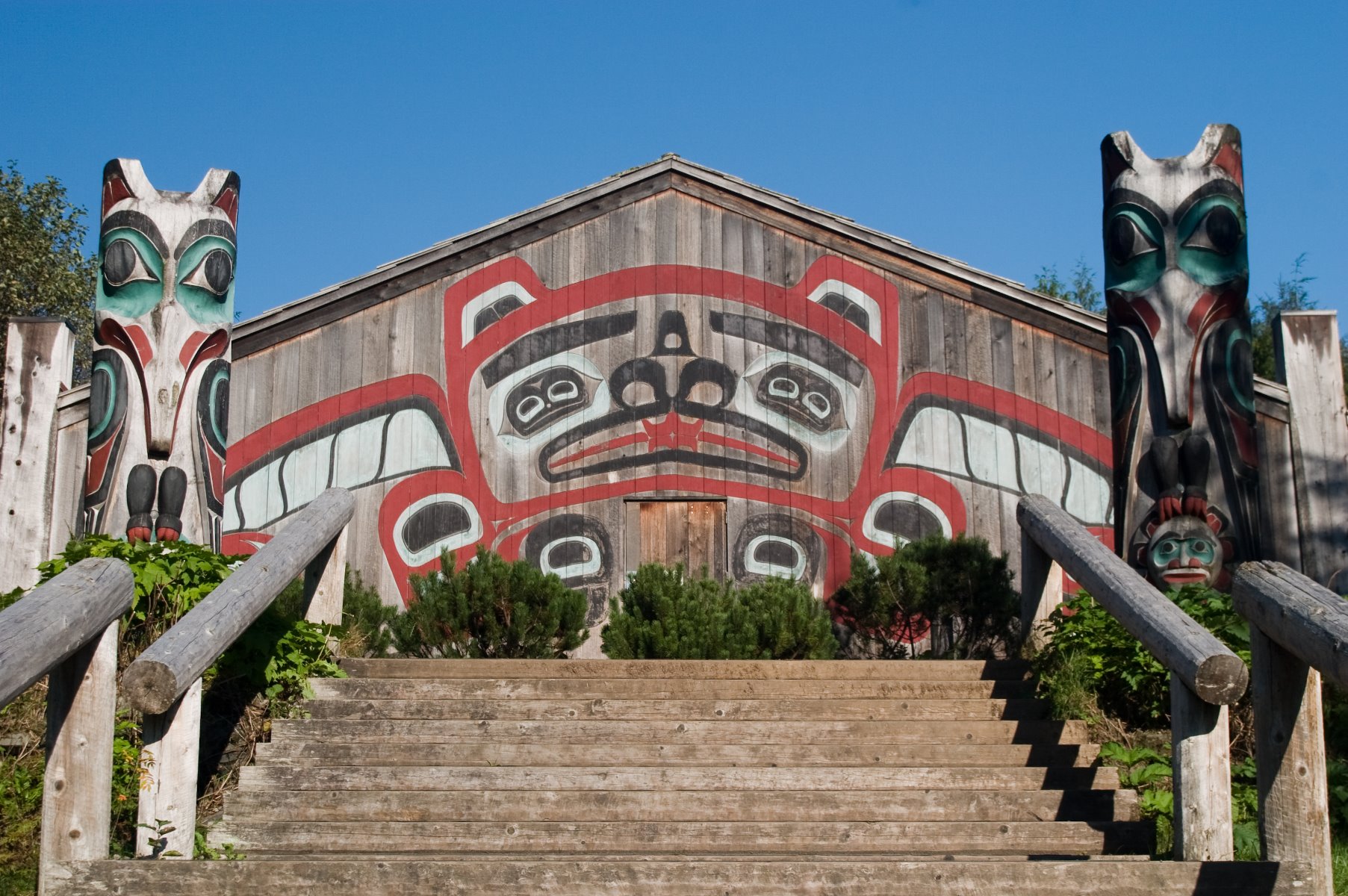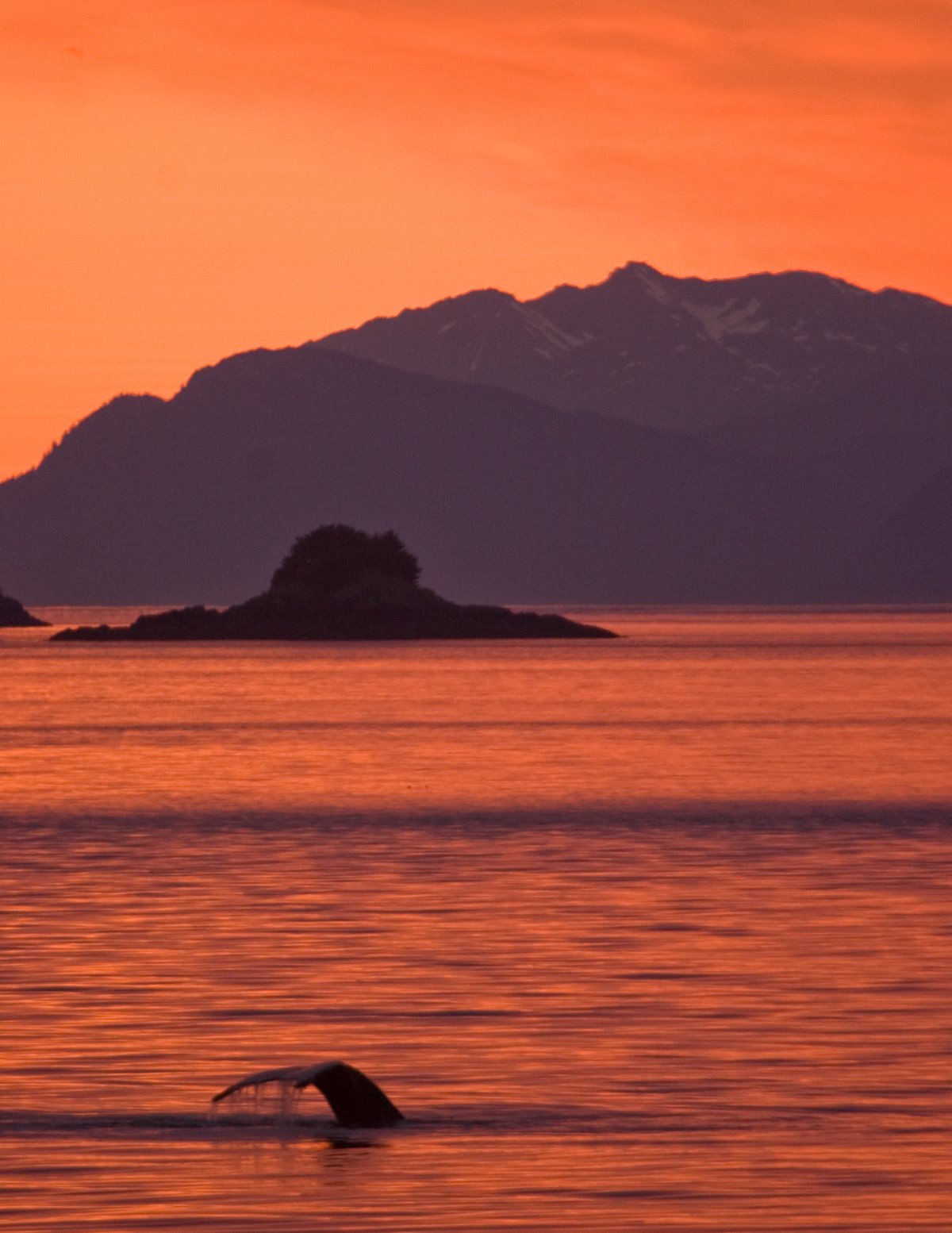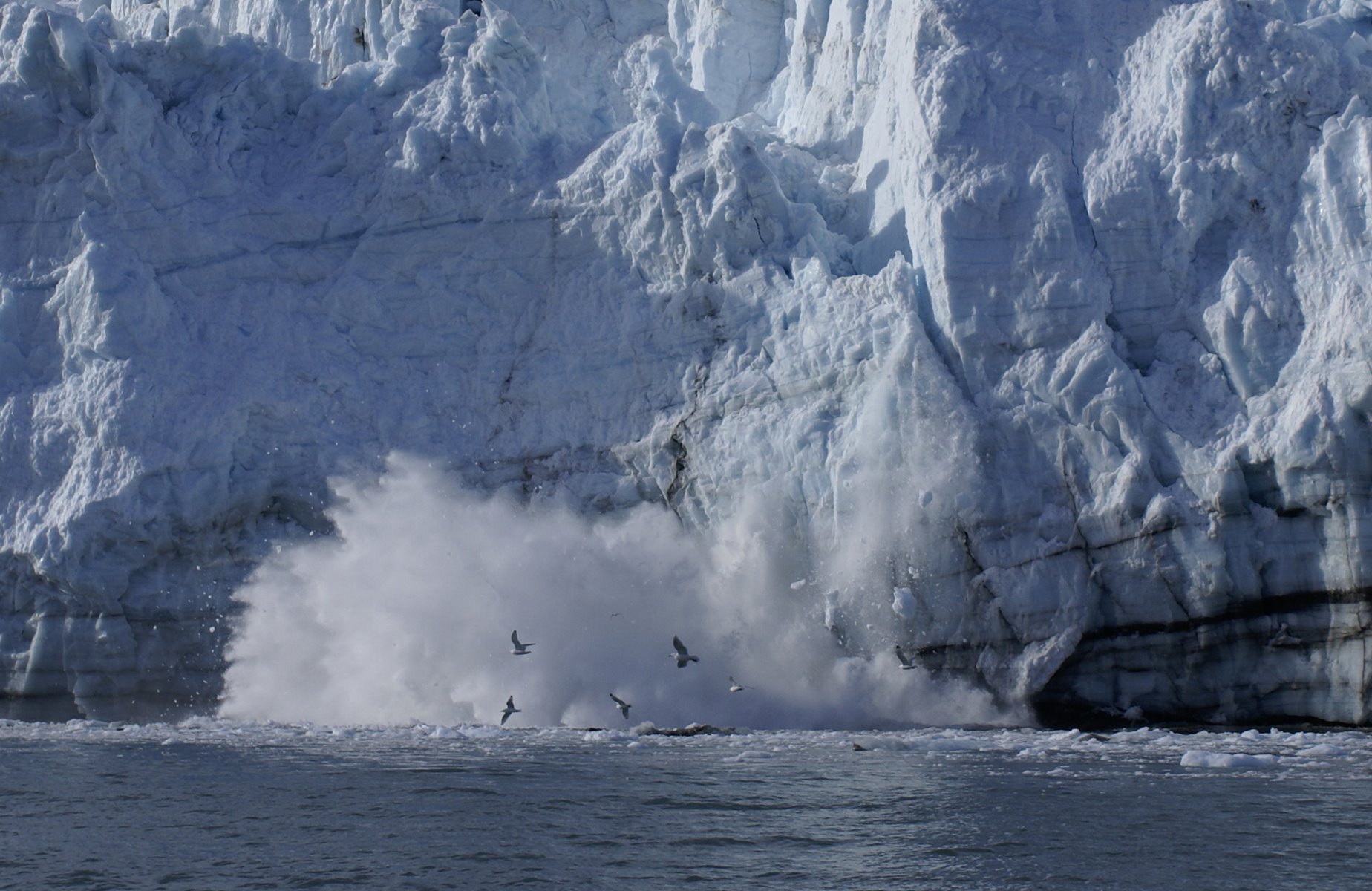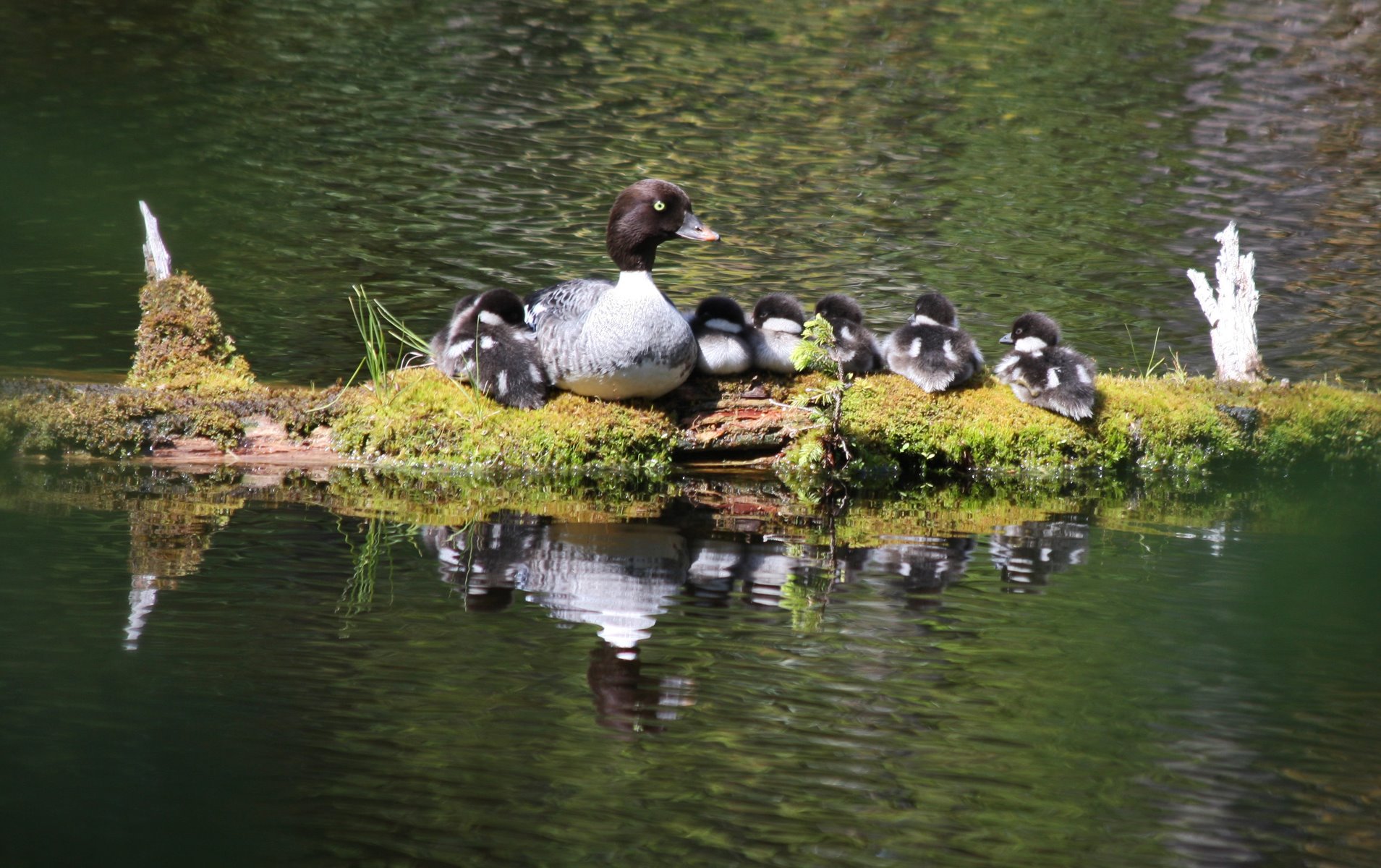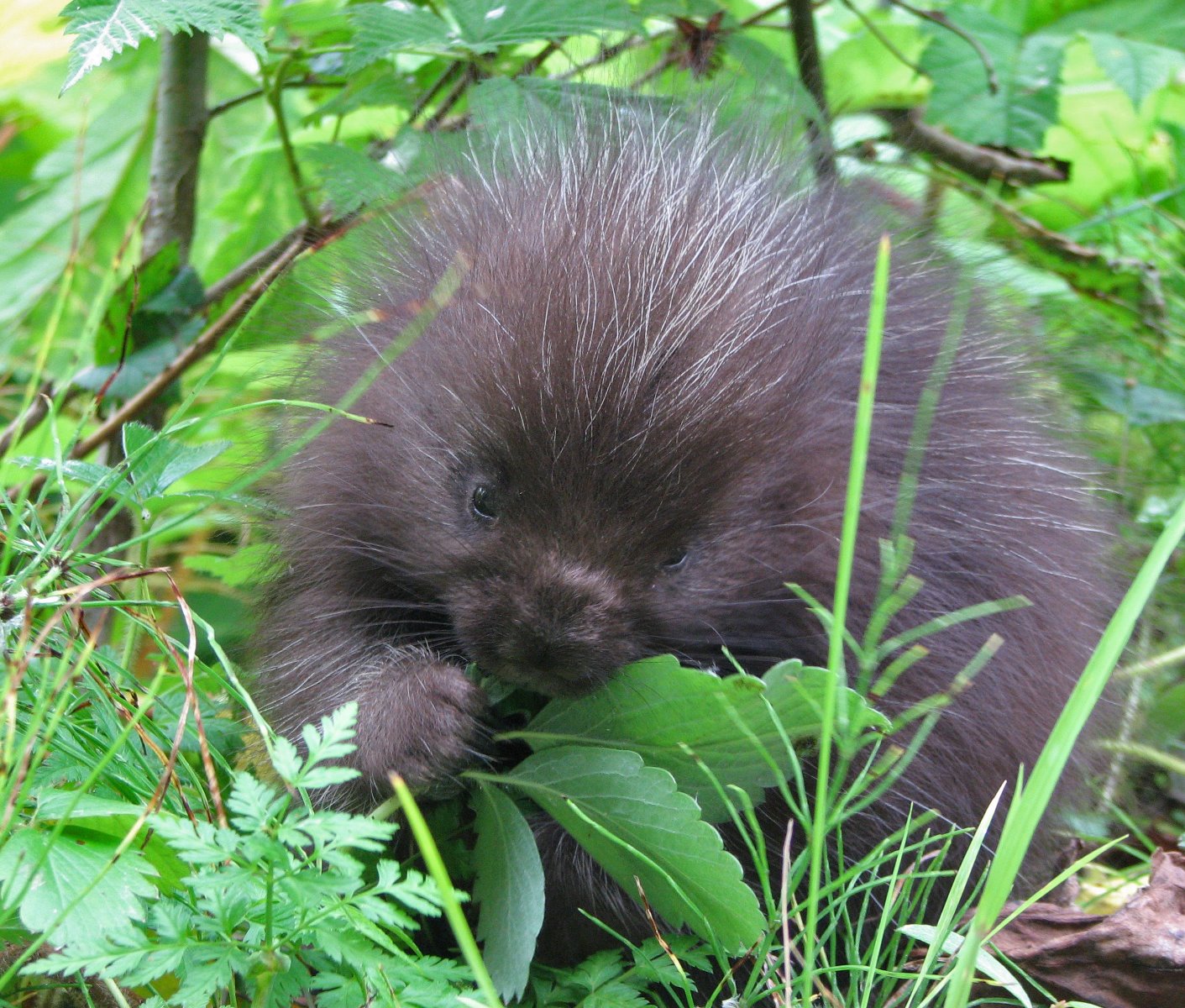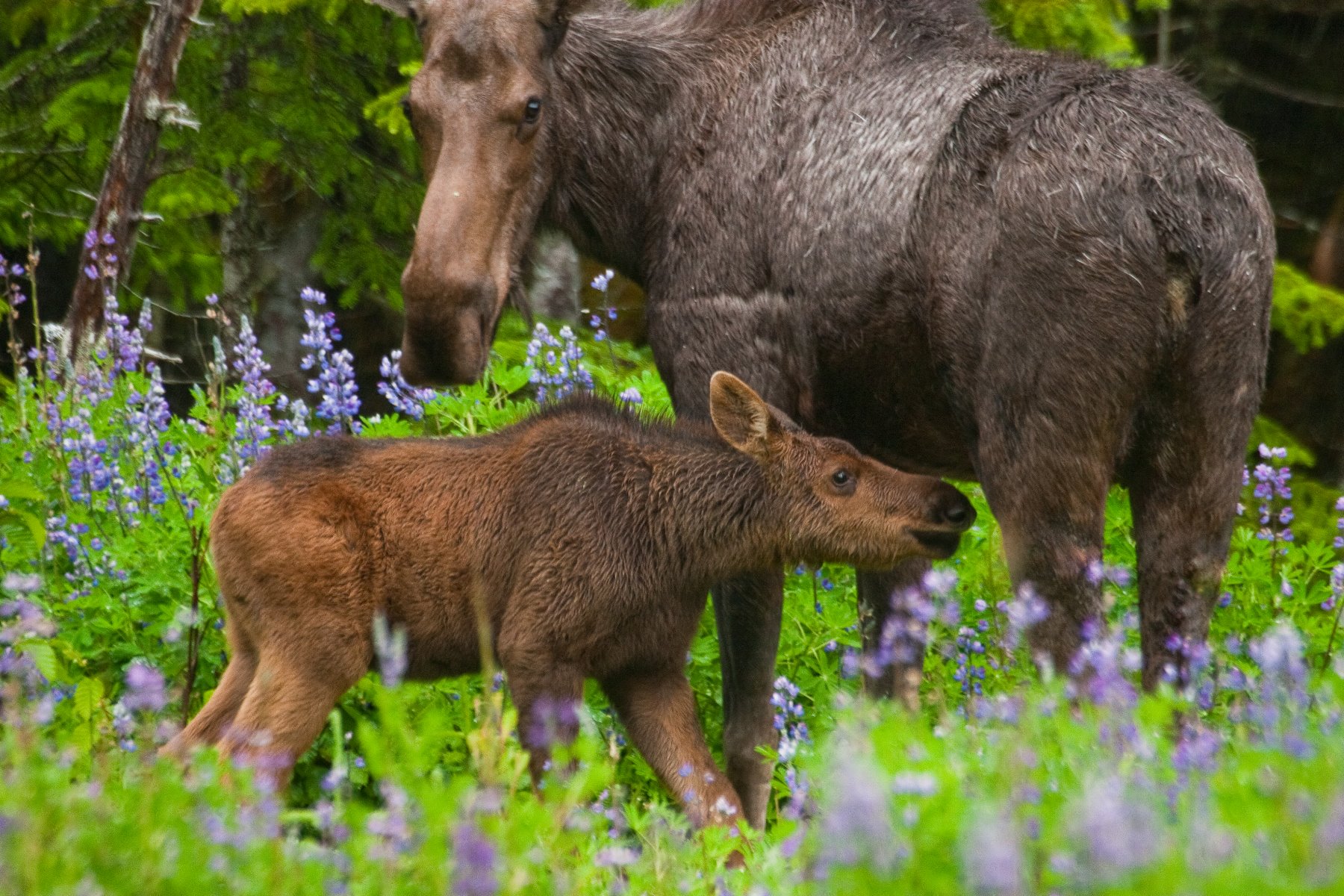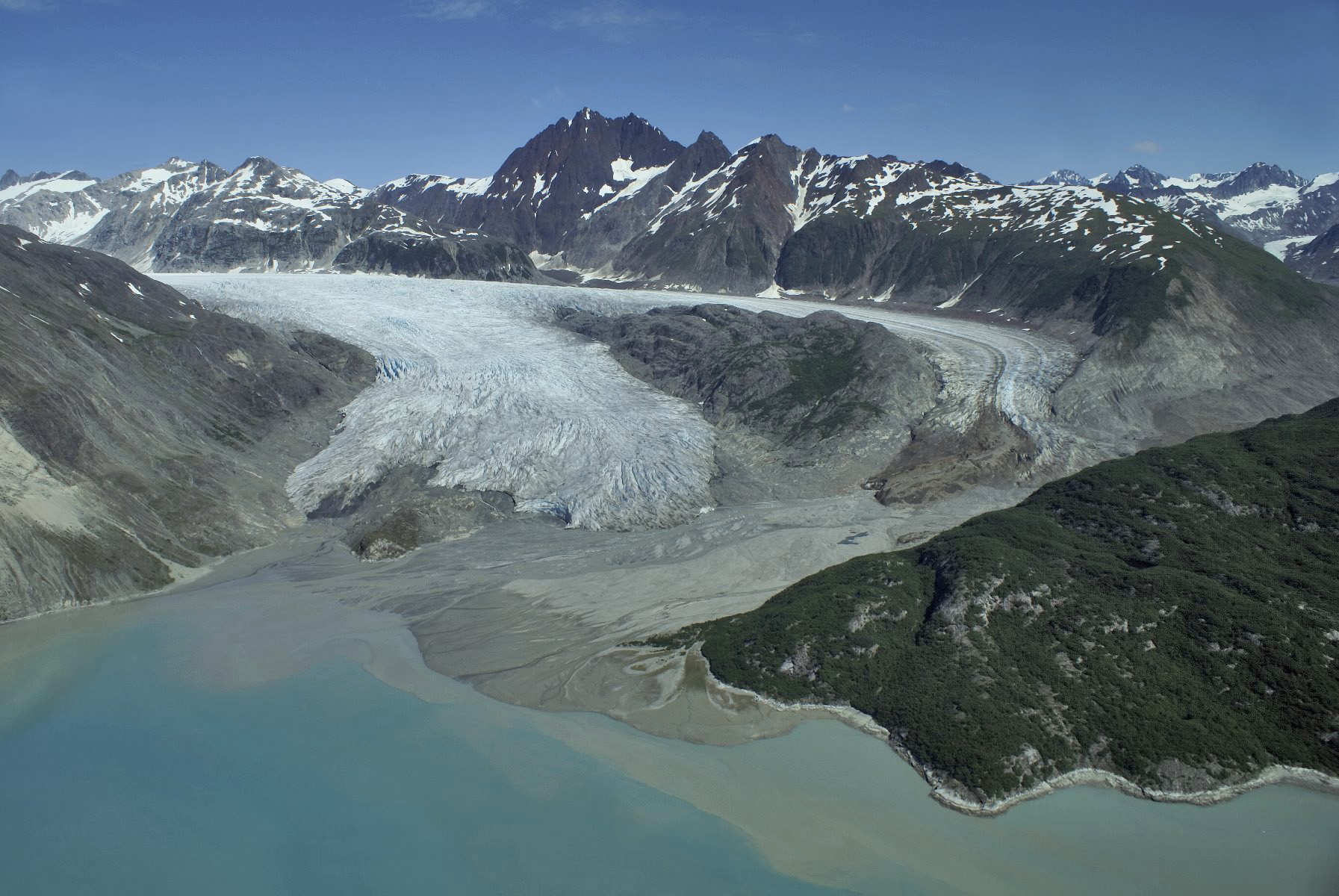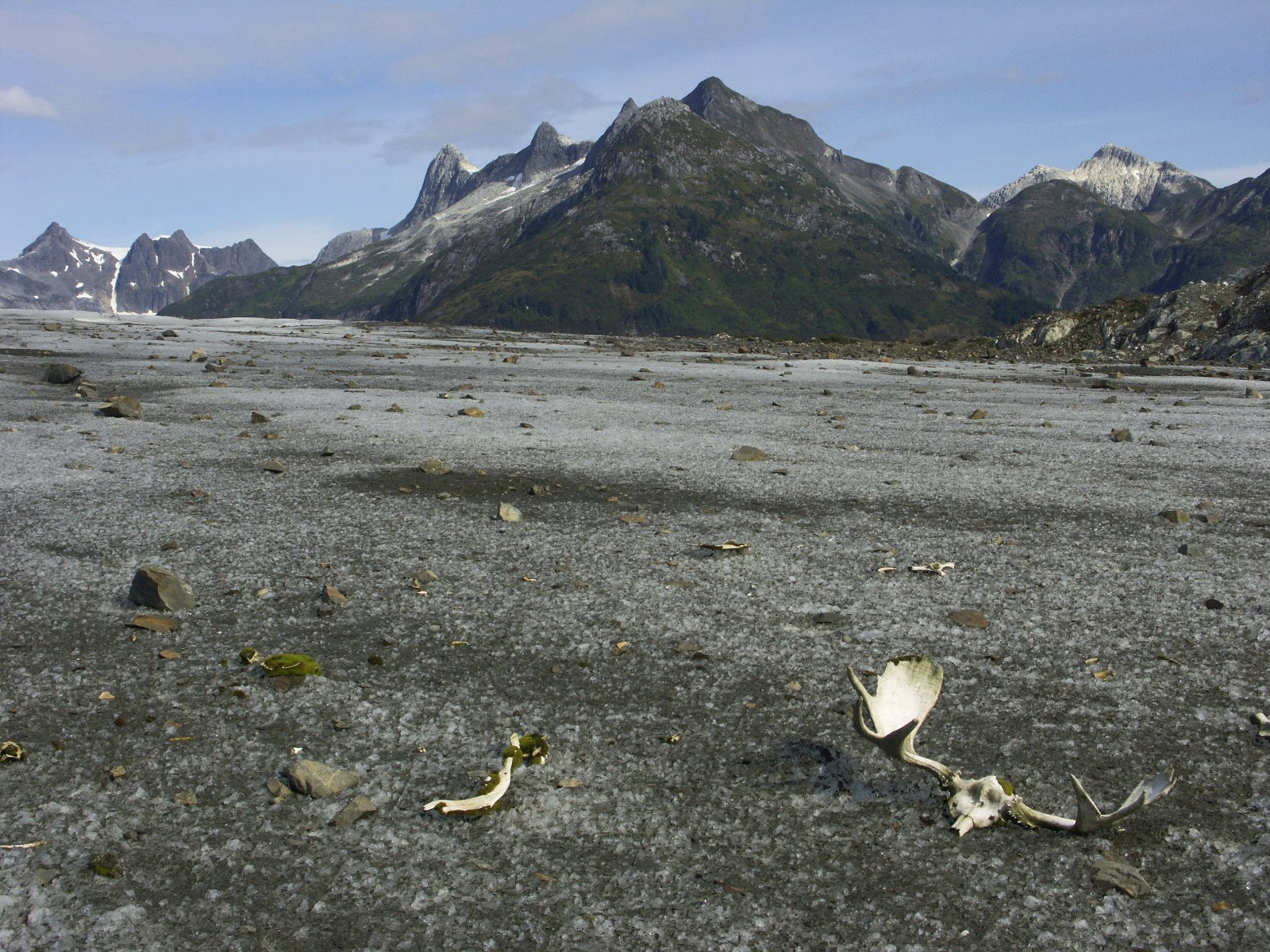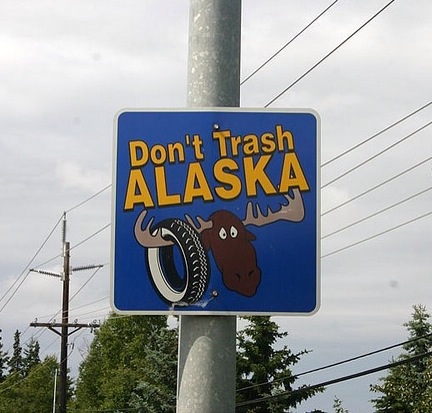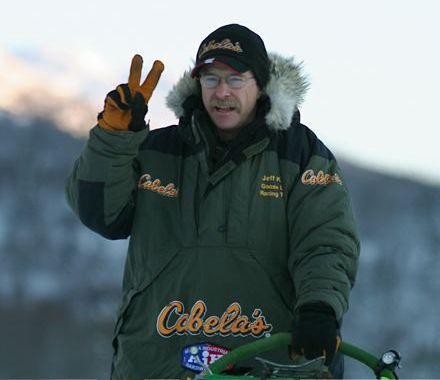I got nothing. The place speaks for itself…
Monthly Archives: July 2013
Alaska Cruise and Glacier Bay Photos

Camp at the top of the icefall, Grand Plateau Glacier, 6700 feet elevation, on the northwest slopes of Mt. Fairweather.

A ‘moulin’ a hole in the ice where water running across the glacier plunges down into the interior of the glacier.

In 1928 the U.S. Navy flew a survey plane throughout Southeast Alaska taking aerial photos. Those photos show that most of the bay shown in the middle of this image didn’t exist back then it was beneath the ice terminus of the Hugh Miller Glacier, which has now retreated back around the corner to the left.

Cotton grass fruits are grain-like seeds with tufts of attached ‘cotton’ that catch the wind and disperse the fruit.

The U.S. Coast Guard recommends that all vessels remain one quarter mile off the face of tidewater glaciers.

Many peaks of Glacier Bay are unnamed or informally named due to an early decree of park superintendents.

Humpback whales compete with brown bears as being the most popular, ‘must-see’ mammal in Glacier Bay.

What makes the ice blue? The ice is blue because that is its true color. This color is expressed because the ice is pure, which allows the light to penetrate sufficiently far that the reds, yellows and violets are differentially absorbed from the light spectrum, leaving the blues and greens to be transmitted back to ones eye. Ice looks white when it contains too many air bubbles that scatter the light back before it can be differentially absorbed by the ice.

Even from a quarter mile, the 150 foot high face of Lamplugh Glacier looms impressively above sea level.
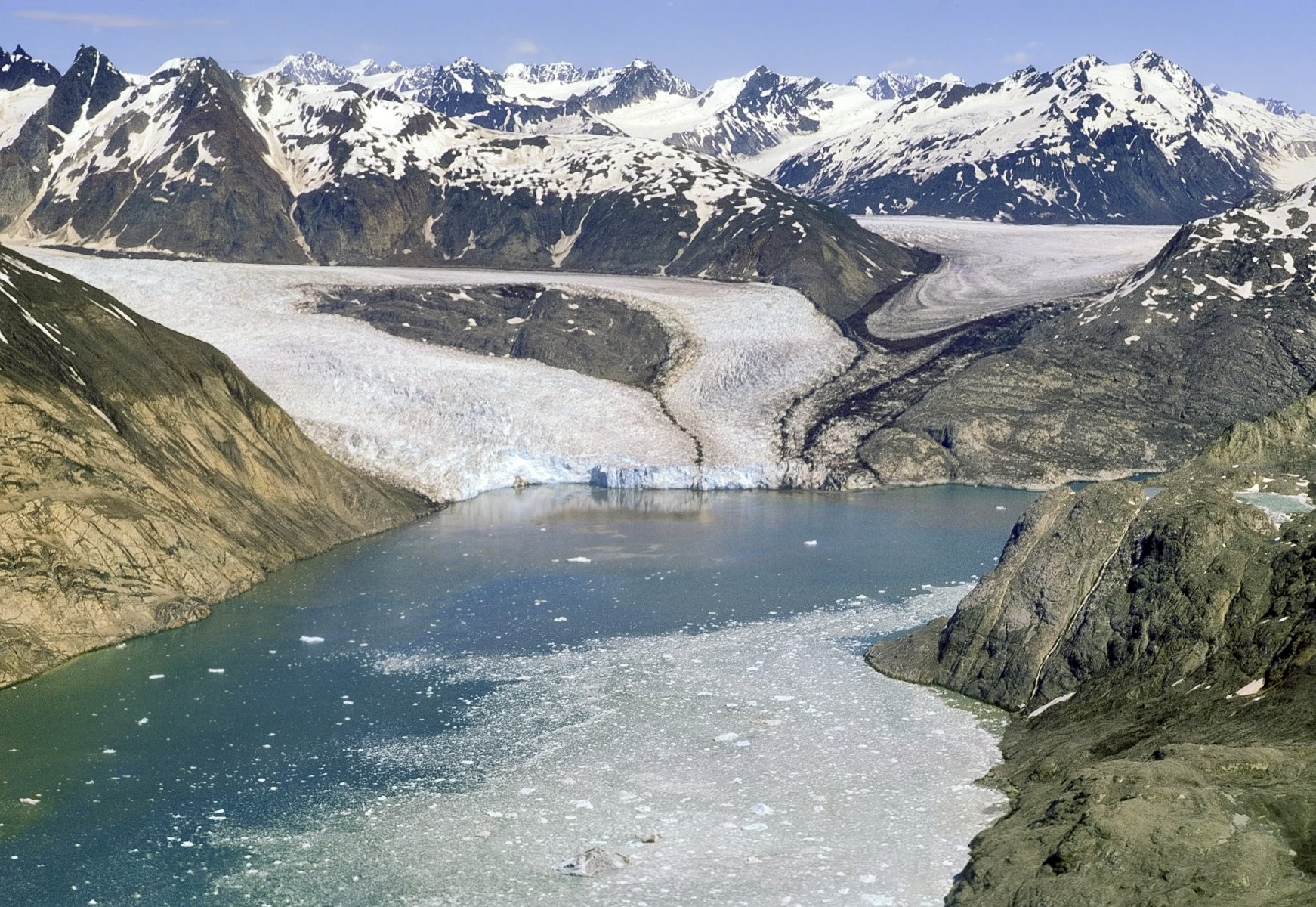
Riggs Glaciers tidewater front separated from Muirs in 1961 and was still calving into the sea in 1967.

Brittle star, a limpet and coralline algae. Brittle stars use their highly flexible arms in a whip motion to move across the rocks and seafloor, unlike sea stars which use tube-like feet.

Dappled with dew, emerald mosses throughout Glacier Bay National Park blanket the rocks, ground and trees.

Red Bluff Bay is one of many seldom-visited, yet spectacular inlets tucked among the islands of Southeast Alaska.

A humpback whale breaches into a strong wind turning rivulets of cascading water into a cloudy mist.

Long-tailed Ducks, formerly called Oldsquaws, congregate into groups of many hundreds of birds during the spring.

Two of the larger and most common land birds seen in Bartlett Cove are the raven and the bald eagle.

The black line in the photo is a partially buried glacier ice worm (about ¼ inch long). Glacier ice worms live in glacier ice and in snow on glaciers.

Toads are important. Scientists refer to amphibians as indicator species. Amphibians, like this boreal toad, are extremely sensitive to small changes in their environment.
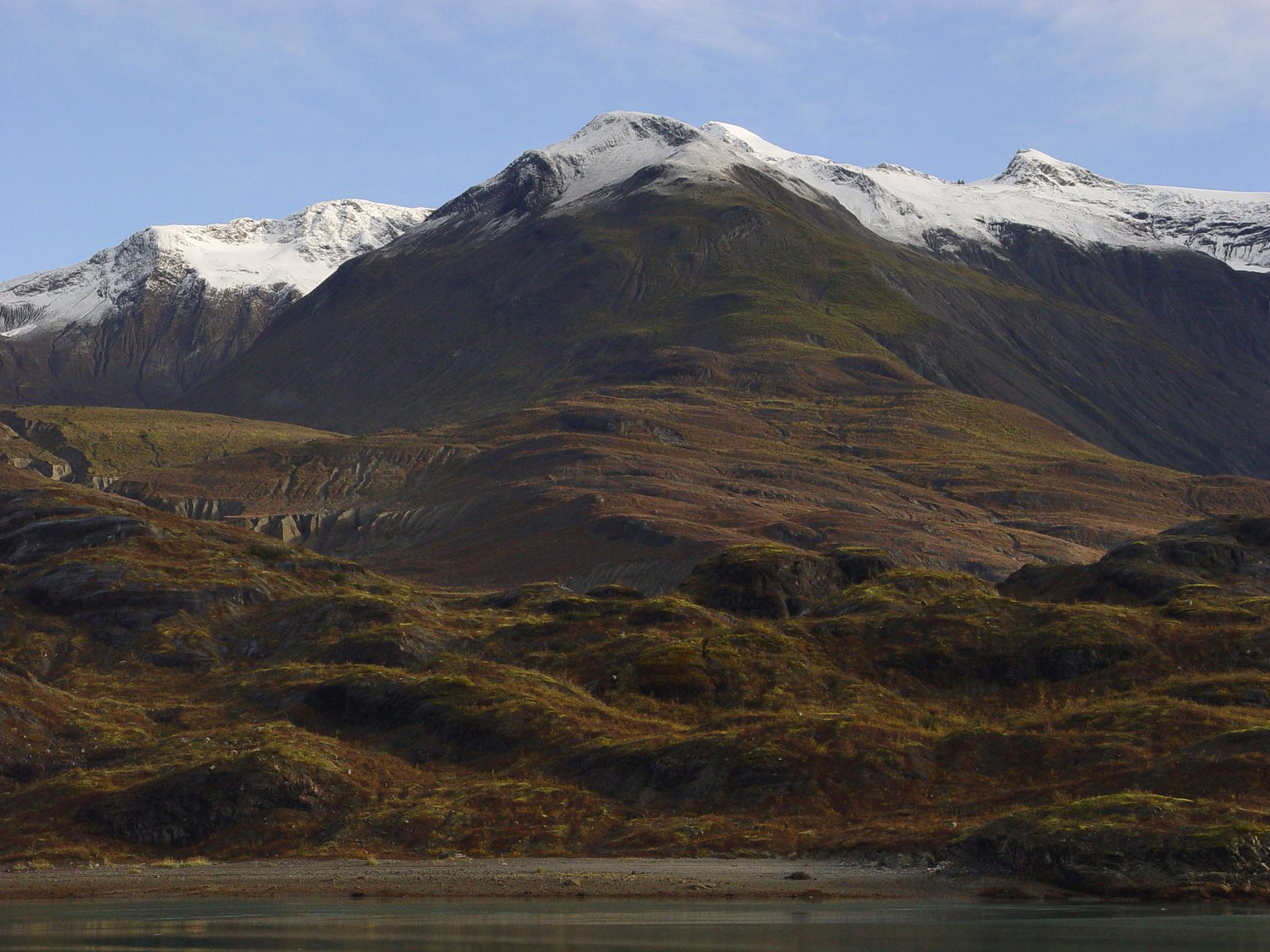
It’s fall and blue skies have emerged after another wet day. These hills are covered with a low growing pioneer plant called dryas, and when dryas fruits are wet their white feathery part becomes translucent and the overall color of the fruit head becomes brown, red brown.

Orca, don’t see them often, maybe once or twice a year. Some years none at all. They always strike me as on the move, heading somewhere. Bears amble, wolves mosey and double back. Humpbacks dive and surface. Orca seem to just go. As if they are late for an important appointment.

This little crevasse is full of water. In the bottom of the crevasse are little pockets where bits of gravel and sand accumulate.

The cone shaped mounds are called glacier cones or debris cones. They are mostly ice with a thin veneer of gravel and sand over a cone of ice.

Every spring and fall, the morning air fills with the ancient and primal call of the Sandhill Crane. The locals know that when they hear this sound in April, winter is gone.

Before the days of plastic fishing floats, glass balls were sometimes used to suspend large fishing nets. Most glass floats found in Alaska are apparently from Japanese fishing vessels.
Two days rolled into one.
Time to leave the Great North wilderness and the closest I’m ever likely to come to the Arctic Circle, and head onto the next stage of our trip. I have had such an awesome time in Alaska. I still can’t believe the places we went, and the things we saw, and the experiences we had. Alaska has been on my list for ever so long and I can’t believe I have now actually been here. So many wonderful memories and so amazing I have gotten to do all these national parks with Aunty Mary – the one person I know who really loves nothing more than getting in amongst all the nature. 🙂
So, packed and ready to go. Only one problem. I had arranged some week and a half ago for a parcel to be sent from amazon.com to myself care of the McKinley Creekside Cabins due to the fact that these Amazon sellers didn’t ship the items I wanted to Australia. And I had been keeping an eye out all week on the post to see when the parcel would turn up… on our last day and nothin had turned up and I was flailing about arranging with the reception staff to forward the item on to Sedona if it turned up after we left. I left the girls at reception – Kayla and Denise – a bottle of Australian Shiraz to thank them for all their help with the stupid parcel. Just on spec, we thought we would pop into the Denali post office before high tailing it out of town. We waited until the post office was open and I walked in with my handy 24 digit parcel post tracker item number and crossed my fingers. Quite unexpectedly, the girls behind the counter went on a hunt and eventually came out of the back room victorious – my parcel had been located and we weren’t going to have to forward things onto an address I’m not even going to be at. Stupid thing was, that, according to the tracker, the parcel had left Anchorage on the 2 July and here was me at the post office asking after it on the 6 July, so I have a feeling it was there all week, it’s just that Mountain Time is a bit like Fiji Time… we’ll get to it when we get to it.
But, all was good. Got to head off to Anchorage for our five hour drive knowing I wasn’t going to have to chase and hunt that parcel anymore. The drive was good, no nasty monster trucks (well, no more than usual) and no roadworks, even better! We decided to spent the afternoon at the Alaska Zoo in Anchorage to see some of the animals we saw in the wild but missed out on seeing them up close, like the wolves, the snow leopard, the red foxes, the Dall sheep and tigers… yeah, okay I made that one up, but the tigers at the zoo were still pretty cool.
Not at all surprisingly, I spent most of my visit at the zoo loitering around the river otter enclosure. Nearly every animal I encountered I took a couple of token photos of, but the otters of course, well there are a couple of hundred of otter pics from our short visit to the zoo! With a bit of luck, some of them might even be decent. After the stop by the zoo, we went to the local Wendy’s and had something for dinner. I even picked up a job application for Mr K, just for the sake of nostalgia, he used to work here back in his college days. 😉
After that it was off to the airport to get ready for the transit from hell… who planned these flights? Oh yeah, that would be me. :/
Our flight from Anchorage to Seattle was at 0035 and arrived at 0445am… we got to watch the sun rising at the same time it was setting which was quite surreal. We had been told that we would be on a flight leaving for Las Vegas at 0830 which meant a bit of a shitty boring lay over at Seattle with very little to do at that early hour of the morning. Fortunately for us however, we ended up on a flight that was leaving at 0600 and we pretty much landed and walked from one terminal to another, waited about ten minutes and found ourselves boarding for Las Vegas – no lines, no waiting, no problems. Awesome bonus there! Midnight flights are bad enough without finding yourself stuck in the airport doing nothing for hours on end. I did however get some amazing photos of the last vestiges of the evenings sunset out of the plane as we took off north out of Anchorage…

Then the most bizarre thing happened, the plan turned around to head south, and we could see the start of the SUNRISE in the east! It was weird, and freak, and completely amazing.
We arrived in Las Vegas and, oh my God, the heat just slapped us upside the head and unfortunately not with a wet haddock which might actually have been more pleasant. Being from the subtropics, we are used to the heat, and we are mostly fine with it… but going from a month of tops in the 14C – 16C range one day and o’night temps that make you grab the thermals, to maximum temps of 41C+, well that is quite another story. It was draining.
We went straight from the airport, to picking up our hire car, to hitting a Walmart for some groceries, to heading out to the Grand Canyon! Another huge tick off the Bucket List coming up right there. We didn’t realize it until we were already doing it, but going out to the quieter and less touristy North Rim meant that we drove through Nevada, Utah and Arizona to get here today… so including Alaska and Washington state, that made five states in one day. Crazy.
Got out to the Grand Canyon Lodge on the North Rim here and got my first look at this Wonder of the Natural World and found myself at a rare loss for words, staring in silence at the amazing vista of the Grand Canyon. Words are unable to capture the scale, and beauty of this place. Even the drive out here was incredible, towering mountains of striated rock in a plethora of colours, through Ponderosa pine forests and open grasslands. Little tufted eared squirrels and a herd of bison on the plains, it all felt very much like stepping into a nature documentary. Just stunning.
So five hours drive to Anchorage (237 miles of bad road over five hours), a stop at the zoo, flight to Seattle (1800 miles and three and a half hours), flight to Las Vegas (867 miles and two hours twenty minutes) and the drive to the Grand Canyon (265 miles and five and a half hours with a few quick stops), and all up it took us over 30 hours to get here and on no sleep!
Anyway, we are safely here now for the next few days, and I am looking forward to exploring this incredible area. I was out on the terrace earlier and a guy saw my t-shirt and say ‘Oh wow, you’ve been to Denali… when were you there?’. ‘Yesterday.’ came my exhausted yet exhilarated reply, which started a conversation about how he thought he had come a long way from Denver, but then again he said, perhaps not. 🙂
Alaska (+)ves and (-)ves
Alaska (+)ves
- Most unbelievably gorgeous scenery I have ever seen in my life.
- Glacier Bay is remarkable… watching the massive chunks of ice fall off the face of the glacier into the water was simply amazing – and made me worry about global warming at the same time.
- The state has a rich and vivid history from their ownership by Russia and acquisition by the US, through to their Gold Rush days.
- The crazy flora and fauna are really interesting (says the girl from the country known for having the most bizarre flora and fauna in the world!).
- Most people were really nice and friendly and helpful (which the exception of some people in Anchorage, where there seems to be a large white trash population and an unusual number of people talking to themselves while sitting in a puddle of urine… so obviously some social problems going on there).
- Licences must be produced to buy alcohol and people with DUIs convictions, which are subsequently recorded on their driver’s licenses, may be refused alcohol at the point of sale.
- No sales tax! On anything! Yay! We love this. Mining royalties being ploughed back into the pockets of the state instead of into the pockets of big oil.
Alaska (-)ves
- Outside the main tourist drags, everything looks kinda run down and like it needs a lick of paint and some TLC… and by everything I mean most houses, most places of commerce, even most people’s cars.
- I swear Princess owns the entire state. Well, the Denali interior at any rate. They cruise in the customers, put them on Princess trains, put them up in Princess Hotels, send them shopping on the main drag, most of which is owned by Princess and set the up on Princess tours. Can we spell ‘monopoly’ much?
- No one drives at the speed limit. Ever.
- Even the best highway going north in Alaska is completely shit, full of potholes and not even remotely flat. They have really aggressive rumble strips and the line markings are so bad that if you overtake when the lines tell you that you are safe, you pull out and find out you can’t see for shit.
- The US Postal Service sucks arse up here… 4 days for a parcel to get from Anchroage to four hours down the road? I don’t think so.
- Pennies… (that’s really a US thing) don’t need ’em don’t want ’em, fuck ’em off. Come to think of it $1 bills are a pain in the butt too.
- Tipping. Fucking hate it. Make the price the price, and be done with it.
Other than that, I totally love Alaska though and would love to come back, maybe in March to see the Iditarod mushing dog race 🙂 Now THAT would be really something to see.
Husky Homestead
A Sneak Peek into Husky Homestead from Husky Homestead on Vimeo.







